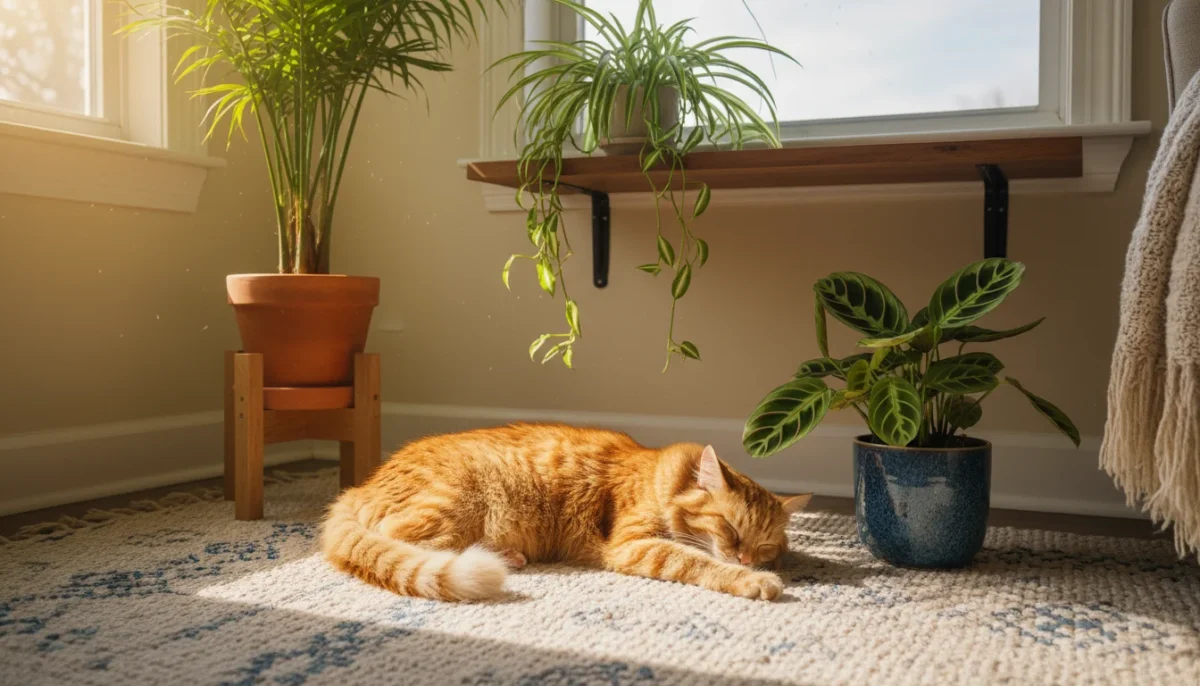Bringing nature indoors enriches your living space, but if you share your home with furry friends, selecting the right plants becomes a top priority. As a houseplant coach for SimpleGardenJoy.com, I understand your desire for a lush, green environment that remains completely safe for your beloved pets. You want peace of mind knowing your cat won’t face danger from a curious nibble, or your dog won’t encounter an issue if a leaf falls. This comprehensive guide walks you through a curated selection of pet-friendly houseplants, offering practical care advice tailored for small spaces and low-maintenance routines. You will discover how to cultivate a thriving indoor garden without compromising your pets’ safety, transforming your compact home into a harmonious haven for everyone.
You might wonder, “How do I truly know if a plant is safe?” This article demystifies common concerns, provides actionable steps for choosing and caring for pet safe houseplants, and even helps you troubleshoot common issues with pet friendly indoor plants using safe methods. Prepare to confidently expand your indoor plant collection, knowing every choice supports a safe and joyful home for you and your animal companions.
For research-based houseplant care and toxicity information, visit reputable sources such as the
Brooklyn Botanic Garden,
New York Botanical Garden,
Royal Horticultural Society (RHS),
University of Minnesota Extension, and the
ASPCA’s extensive plant list.
Disclaimer: This article is for informational purposes only and is not a substitute for professional veterinary advice. Consult your veterinarian for pet health concerns and local extension services for region-specific plant recommendations.
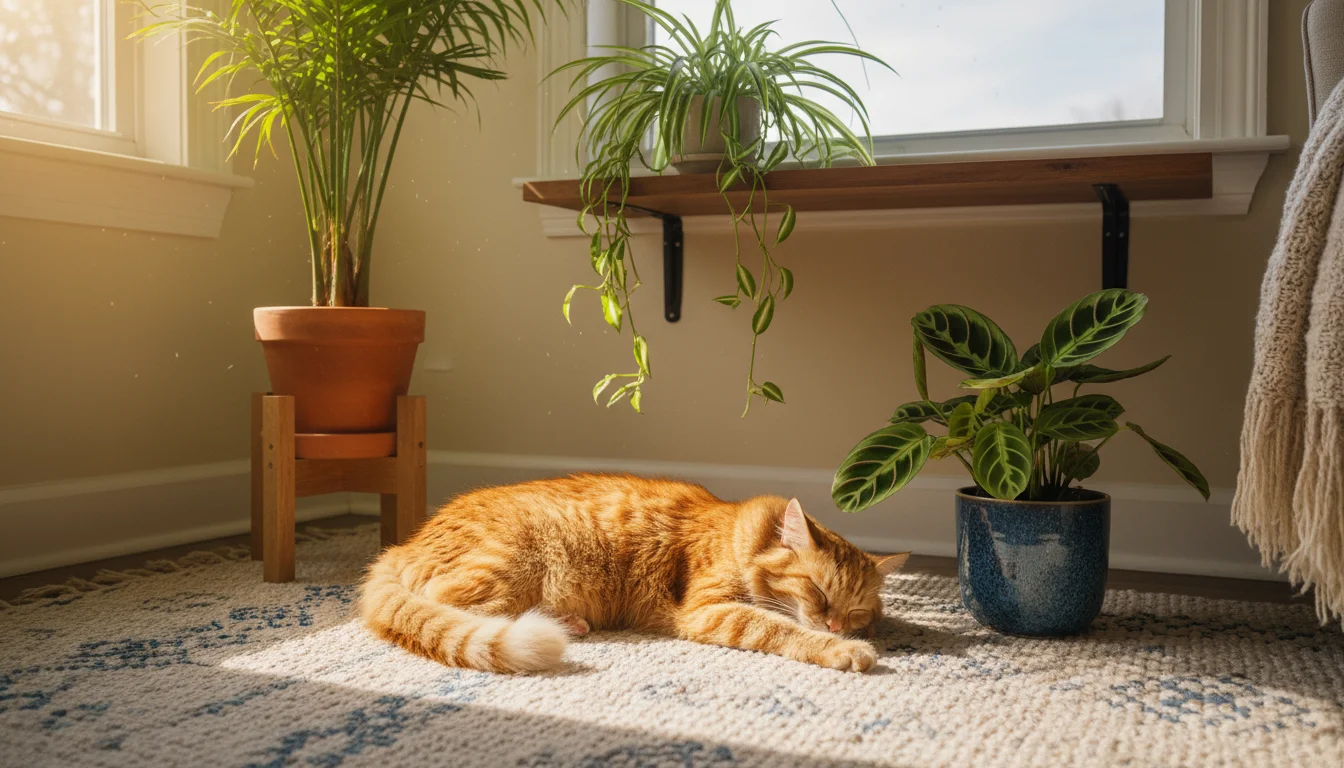
Unveiling the World of Pet-Friendly Houseplants
You love your pets, and you also love the vibrancy plants bring to your home. You do not need to choose between them. Pet-friendly houseplants offer a beautiful solution, allowing you to cultivate an indoor oasis without concern for your furry companions. These plants are scientifically recognized as non-toxic to common household pets such as cats and dogs, giving you invaluable peace of mind. You can enjoy the air-purifying benefits, aesthetic appeal, and calming presence of greenery without fearing an emergency trip to the vet should your pet decide to take a curious bite.
Consider the myriad benefits of integrating pet safe houseplants into your living space. Plants naturally enhance indoor air quality by absorbing carbon dioxide and releasing oxygen. They introduce a sense of tranquility and connection to nature, which studies show can reduce stress and improve mood. For those in apartments or compact homes, cleverly chosen and placed plants can make a small space feel larger, brighter, and more inviting. When you select plants with your pets in mind, you create a truly harmonious environment where everyone, human and animal alike, can thrive.
You can create stunning plant displays on shelves, in hanging planters, or as floor accents, knowing that each green addition contributes positively to your shared home. The key lies in informed choices and simple, consistent care routines that fit seamlessly into your busy life. We guide you through plant selections that are not only safe but also resilient and forgiving, perfect for both beginner and intermediate plant enthusiasts.
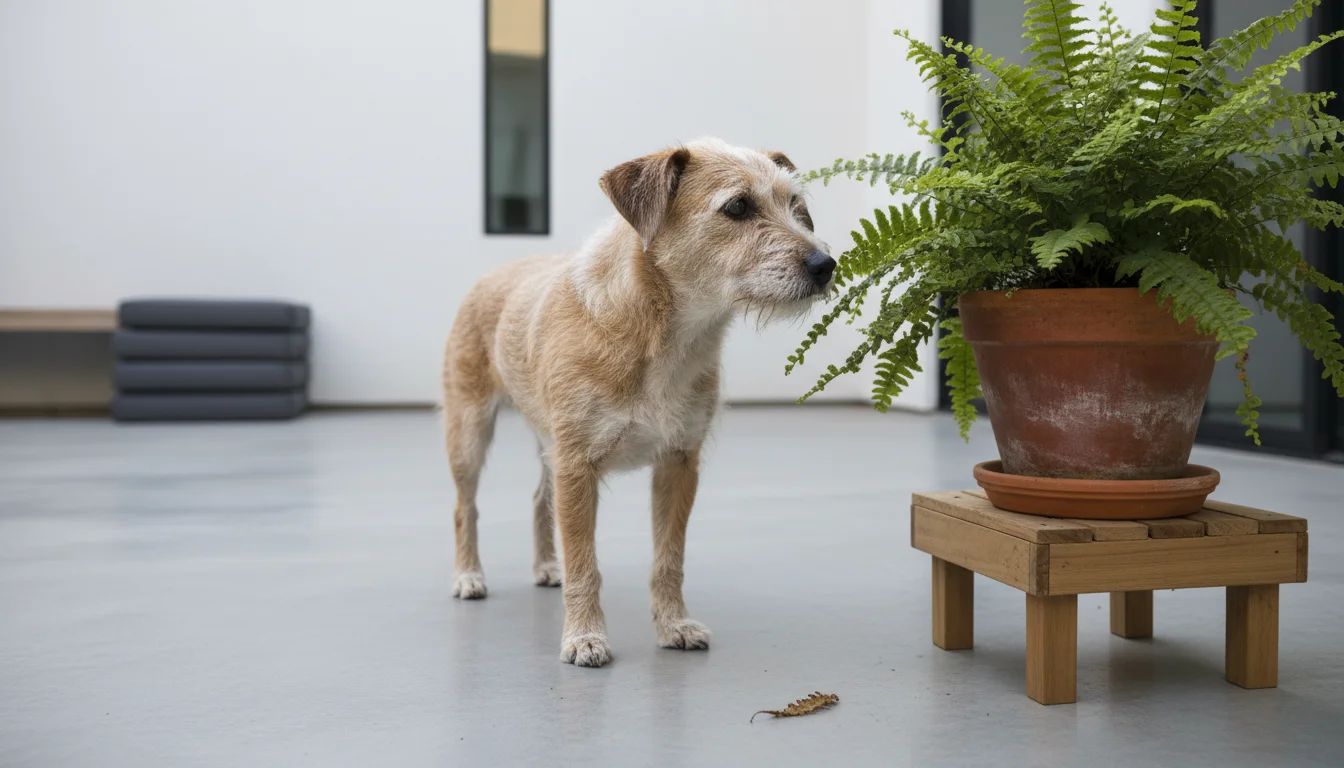
Decoding Pet Safety: What “Non-Toxic” Truly Means
When a plant is labeled “pet-friendly” or “non-toxic,” it means that ingestion typically does not result in serious systemic poisoning or life-threatening reactions for common household pets. However, even non-toxic plants can cause mild gastrointestinal upset, such as vomiting or diarrhea, if consumed in large quantities. This irritation usually stems from the plant material itself, rather than specific toxins. Your pet’s individual sensitivity can also play a role. A curious nibble on a spider plant leaf, for instance, typically poses no harm, but a large quantity might still cause a mild tummy ache.
The most authoritative resource for pet plant toxicity comes from organizations like the American Society for the Prevention of Cruelty to Animals (ASPCA). Their comprehensive database lists plants as toxic or non-toxic based on veterinary research and reported cases. You should always consult their database or a similar reputable source when considering a new plant for your home. This proactive step ensures you make truly informed decisions for your pet’s well-being.
Even with non-toxic plants, observe your pet’s behavior. Some pets are simply more prone to munching on greenery. If your pet shows excessive interest in any plant, even a safe one, consider placing it out of reach. This preventive measure reduces the likelihood of any digestive upset and protects your plant. Remember, the goal is a peaceful co-existence where both your plants and pets flourish securely.
Before bringing home any new plant, always perform a quick check. Identify the plant by its botanical name, then cross-reference it with the ASPCA’s non-toxic plant list. This simple habit guarantees you maintain a truly safe environment for your cherished animal companions.
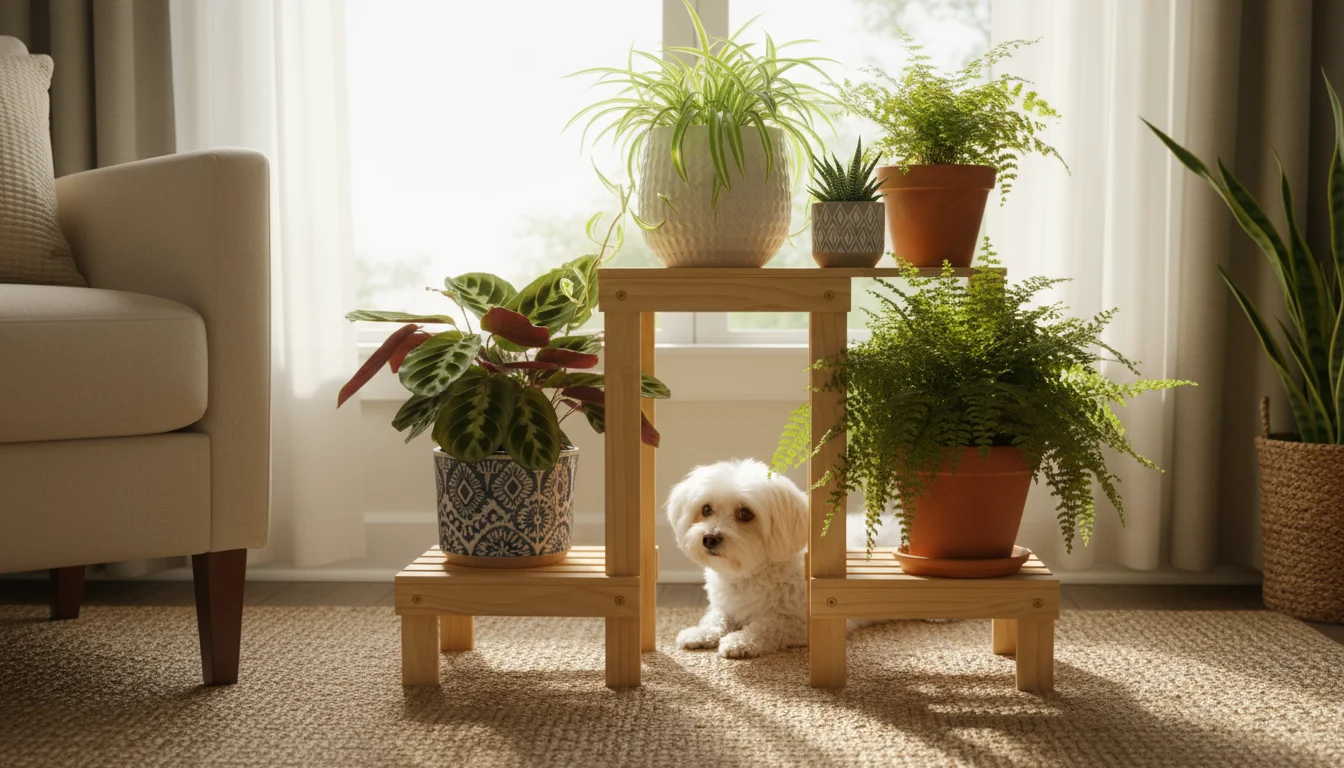
Our Top Picks: Delightful Pet-Safe Houseplants for Your Home
You want beautiful plants that thrive in your small space and offer complete peace of mind regarding your pets. Here is a curated selection of pet safe houseplants, perfect for apartments and low-maintenance lifestyles. We provide details on their ideal light, watering needs, and why they make excellent dog friendly indoor plants and cat safe plants.
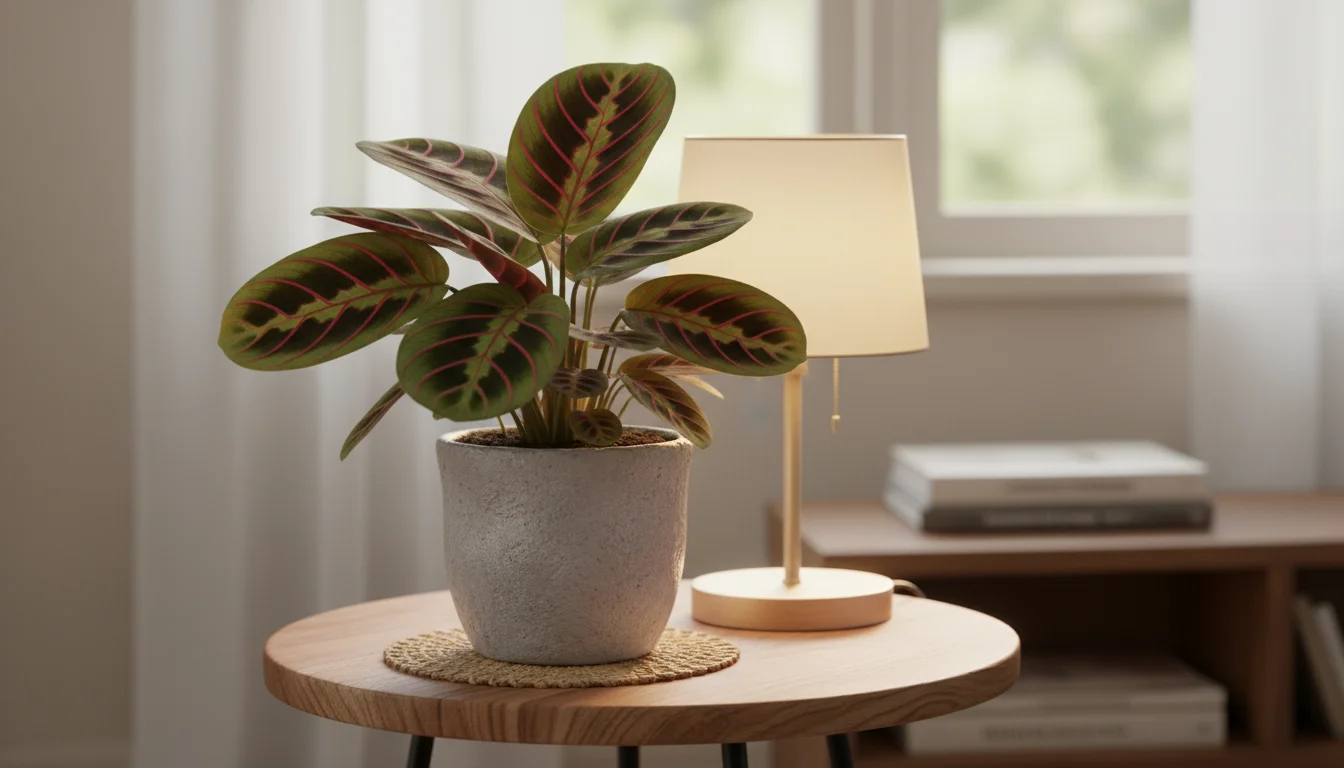
Prayer Plant (Maranta leuconeura)
The Prayer Plant earns its name from its fascinating habit of folding its leaves upwards at night, resembling praying hands, then unfurling them again in the morning. Its striking foliage, featuring vibrant green with red or purple veins and often a darker green blotch in the center, brings a dynamic beauty to any room. This plant’s moderate growth habit and compact size make it an ideal choice for tabletops, shelves, or hanging baskets in smaller living areas.
- Light: Prefers bright indirect light. Direct sun scorches its delicate leaves, causing them to fade or turn crispy. Place it a few feet from a north or east-facing window, or use a sheer curtain on a south or west-facing window.
- Watering: Keep the soil consistently moist, but avoid waterlogging. Allow the top inch of soil to dry out slightly between waterings. Yellowing leaves often indicate overwatering, while crispy brown edges suggest underwatering or low humidity.
- Humidity: Thrives in high humidity. Boost humidity by grouping it with other plants, placing it near a humidifier, or using a pebble tray with water. This helps prevent leaf edges from browning.
- Why it’s pet-friendly: The ASPCA lists Prayer Plant as non-toxic to cats and dogs.
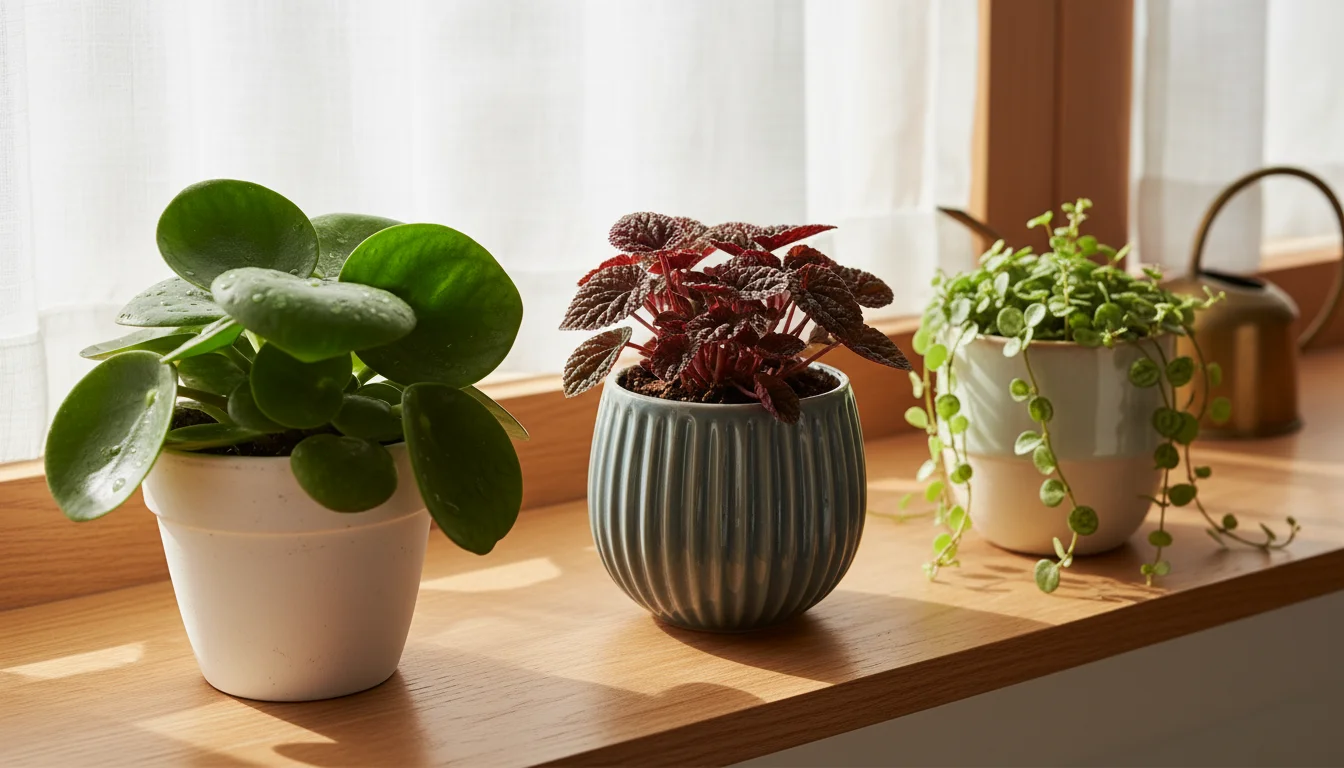
Peperomia Species (e.g., Peperomia obtusifolia, Peperomia caperata)
Peperomias offer incredible diversity in leaf shape, color, and texture, making them excellent collector’s plants. From the thick, waxy leaves of the Baby Rubber Plant (P. obtusifolia) to the crinkled, heart-shaped foliage of the Ripple Peperomia (P. caperata), you find a peperomia to suit your aesthetic. Most varieties remain compact, making them perfect for windowsills, desks, and small shelves. Their semi-succulent leaves store water, contributing to their low-maintenance appeal.
- Light: Enjoys medium to bright indirect light. Avoid intense direct sun, which can bleach their leaves. They tolerate lower light conditions, but their growth slows, and colors may appear less vibrant.
- Watering: Water thoroughly, then allow the top 50% of the soil to dry out before watering again. Their thick leaves indicate some drought tolerance. Overwatering causes root rot, a common issue, so err on the side of underwatering.
- Soil: Use a well-draining potting mix. A standard indoor potting mix amended with perlite or orchid bark works well.
- Why it’s pet-friendly: All Peperomia species are considered non-toxic to pets by the ASPCA, making them a fantastic and varied choice for your home.
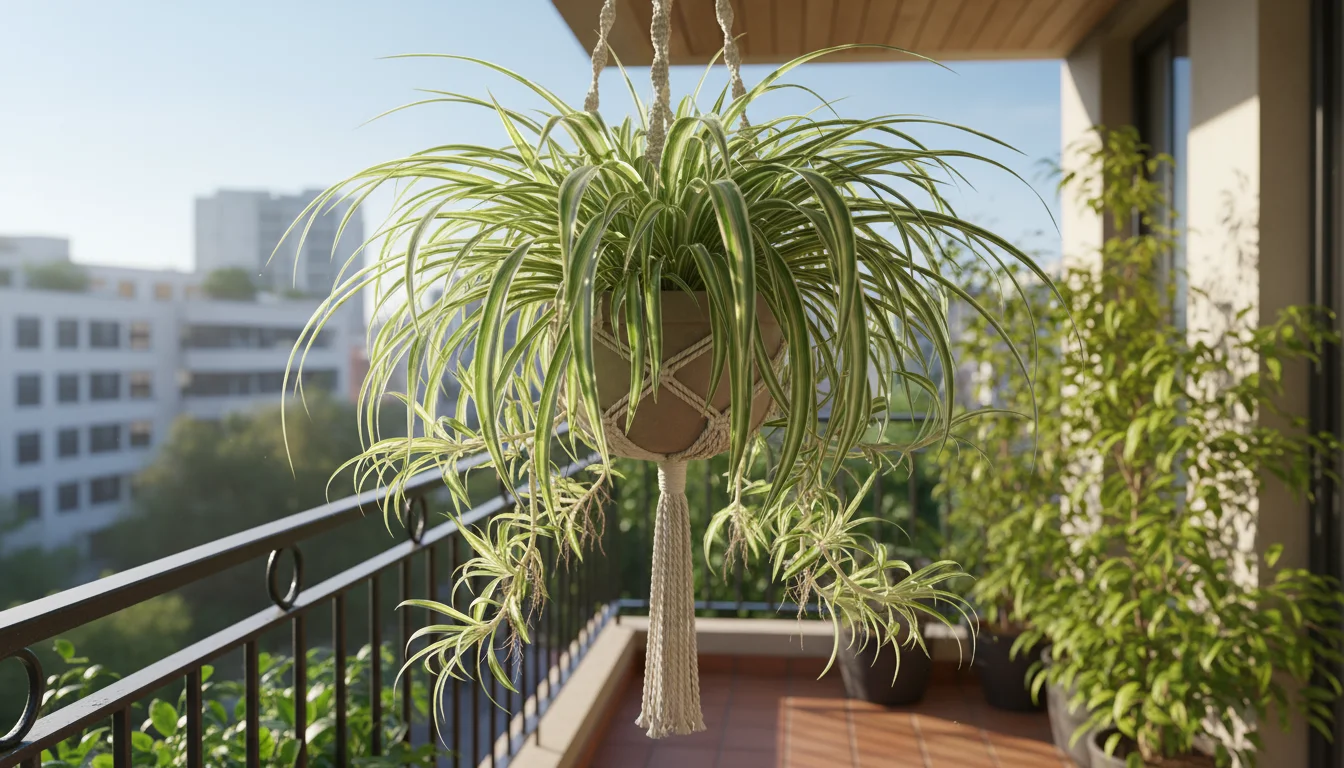
Spider Plant (Chlorophytum comosum)
The classic Spider Plant is a staple for good reason. Its arching, variegated leaves and prolific production of “spiderettes” (baby plants) make it both beautiful and easy to propagate. It adapts to various conditions and looks stunning in hanging baskets, allowing its graceful foliage and babies to cascade downwards. This makes it an ideal pet friendly indoor plant that offers visual interest and is perfect for sharing with friends.
- Light: Tolerates a wide range, from low to bright indirect light. Bright indirect light promotes the best variegation and more spiderettes. Direct sunlight can scorch its leaves.
- Watering: Keep the soil consistently moist but not waterlogged. Allow the top inch of soil to dry before rewatering. They are somewhat drought-tolerant but perform best with consistent moisture.
- Humidity: Adapts to average household humidity. Brown leaf tips often indicate low humidity or fluoride in tap water. Use distilled or filtered water if this is a recurring issue.
- Why it’s pet-friendly: Spider Plants are famously non-toxic to cats and dogs, and many pets enjoy playfully batting at their dangling spiderettes.
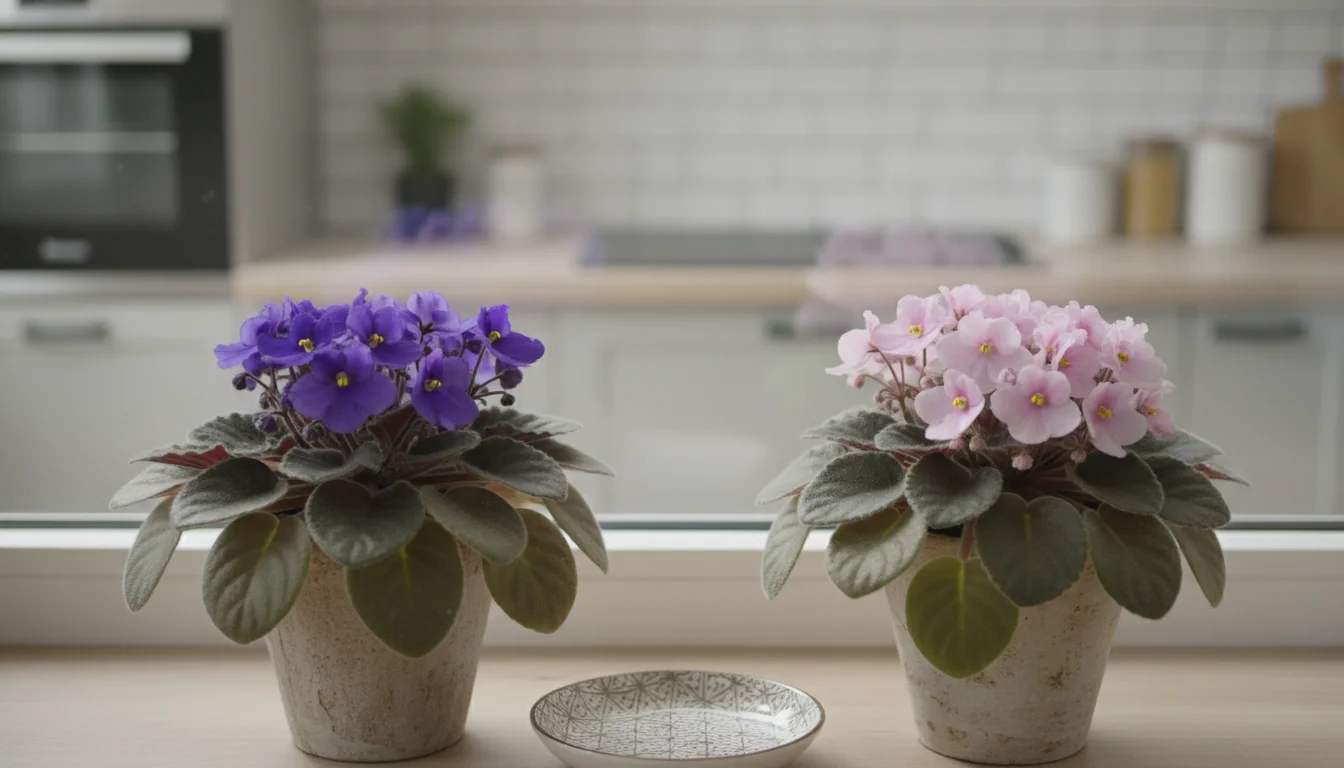
African Violet (Saintpaulia spp.)
These charming, compact plants produce a continuous display of delicate, velvety flowers in shades of purple, pink, white, and blue. African Violets are perfect for small spaces like windowsills or shelves, adding a touch of floral elegance. Their fuzzy leaves are also quite appealing. Despite their delicate appearance, they are surprisingly resilient with the right care.
- Light: Requires bright indirect light for abundant blooms. An east or north-facing window works perfectly. If using a south or west window, ensure it has a sheer curtain to diffuse intense sun. Insufficient light results in leggy growth and few flowers.
- Watering: Water from the bottom or ensure water does not touch the fuzzy leaves, as this can cause spots. Use room-temperature water. Keep the soil consistently moist but never soggy. Allow the top soil to feel slightly dry before watering again.
- Soil: Use a specialized African Violet potting mix, which is typically lighter and well-draining.
- Why it’s pet-friendly: African Violets are non-toxic to both cats and dogs, allowing you to enjoy their continuous blooms without worry.
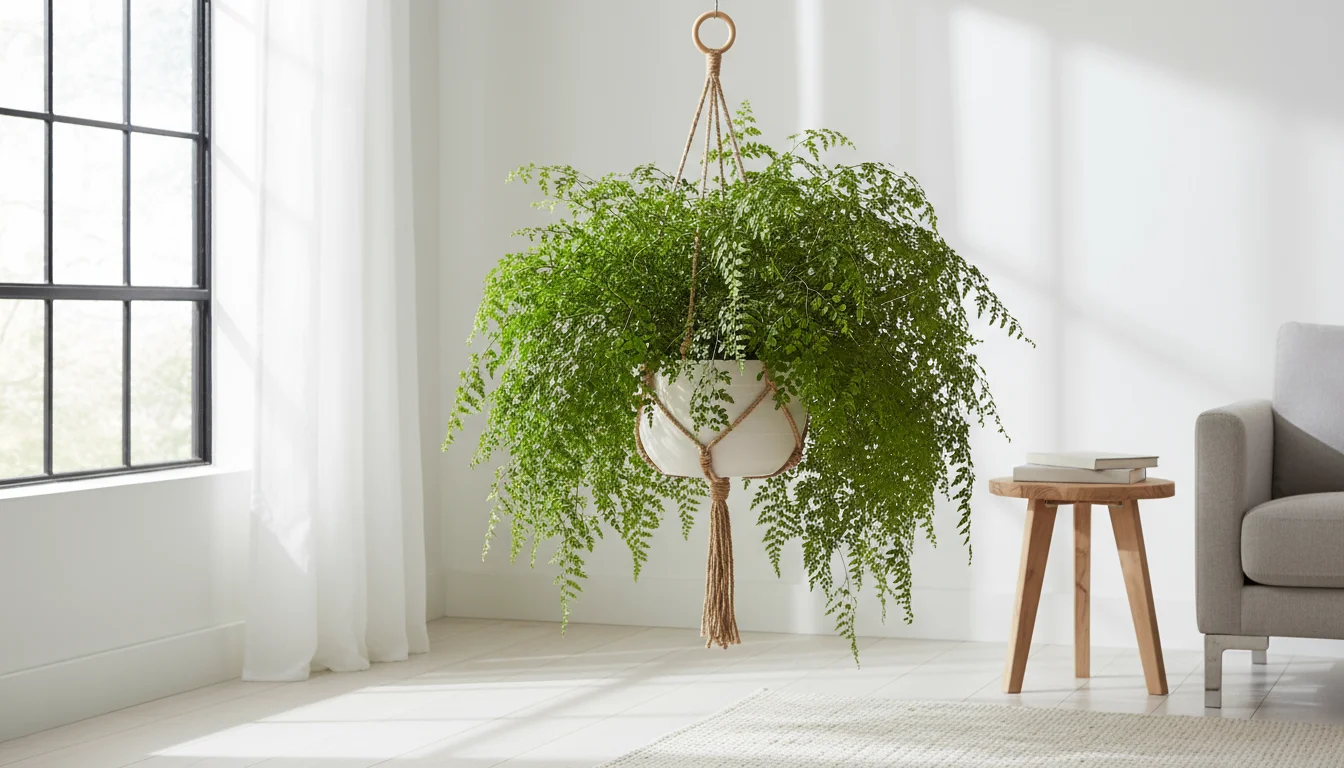
Boston Fern (Nephrolepis exaltata ‘Bostoniensis’)
Known for its lush, arching fronds, the Boston Fern brings a timeless, verdant elegance to any interior. It excels in hanging baskets or on pedestals where its feathery foliage can cascade freely. This fern is an excellent choice for adding texture and a natural, jungle-like feel to your home, particularly in compact spaces where its graceful form can be highlighted.
- Light: Prefers medium to bright indirect light. Avoid direct sun, which can scorch its fronds. It can tolerate lower light, but growth may be less vigorous.
- Watering: Requires consistently moist soil. Do not allow the soil to dry out completely. Water thoroughly when the top inch of soil feels slightly dry. Good drainage is crucial to prevent root rot.
- Humidity: Thrives in high humidity. Mist regularly, group with other plants, or use a pebble tray to maintain moisture around the plant. Low humidity causes frond tips to turn brown and crispy.
- Why it’s pet-friendly: Boston Ferns are completely non-toxic to cats and dogs, making them a classic and safe choice for adding lush greenery.
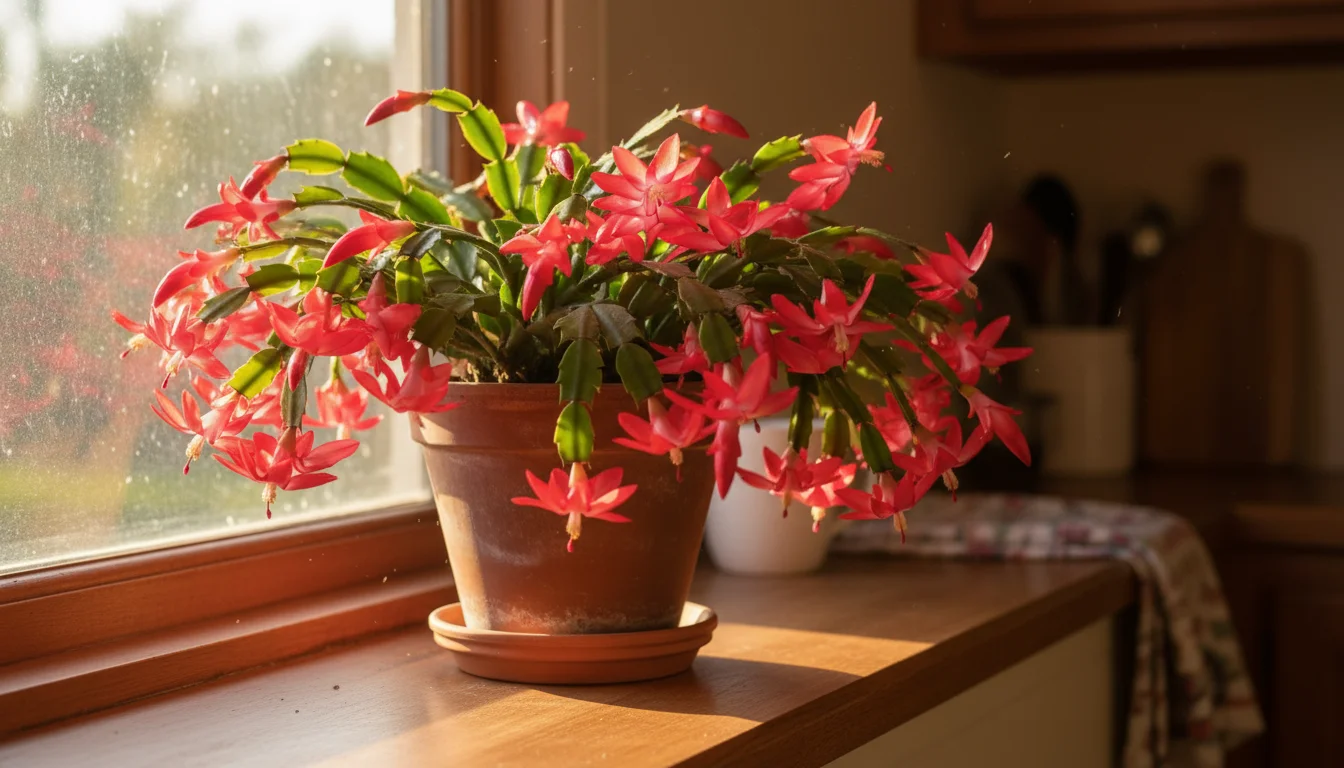
Christmas Cactus / Thanksgiving Cactus (Schlumbergera spp.)
These festive plants delight with colorful blooms during the cooler months, adding a cheerful splash of pink, red, white, or orange to your home. Their segmented, flattened stems grow gracefully, making them ideal for hanging baskets or bright shelves. They are surprisingly easy to care for and provide reliable seasonal cheer.
- Light: Needs bright indirect light. A north or east-facing window is ideal. Avoid harsh afternoon sun, which can burn their stems. They appreciate consistent light exposure.
- Watering: Water thoroughly when the top two inches of soil feel dry. Unlike desert cacti, these are tropical cacti and prefer more consistent moisture, especially when budding and blooming. Reduce watering slightly after flowering.
- Temperature: Prefers cooler temperatures (50-65°F or 10-18°C) in fall to encourage blooming.
- Why it’s pet-friendly: Both Christmas and Thanksgiving Cacti are listed as non-toxic by the ASPCA, allowing you to enjoy their holiday blooms worry-free.
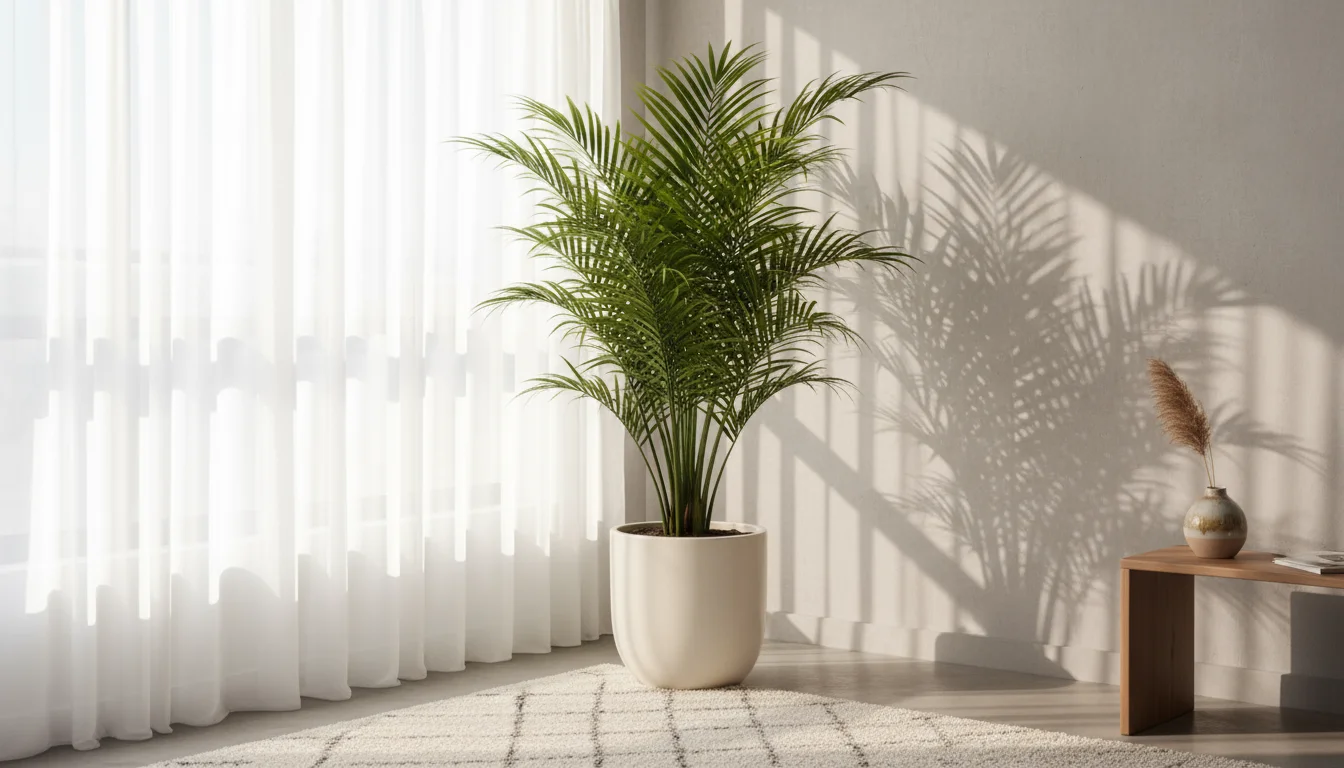
Areca Palm (Dypsis lutescens)
The Areca Palm boasts elegant, arching fronds that bring a touch of tropical grandeur to your indoor space. Its upright growth habit makes it suitable for corners or as a statement piece, even in apartments, where it can reach a manageable height of 5-7 feet indoors. It is an excellent choice for adding a lush, airy feel and is often recommended for its air-purifying qualities.
- Light: Prefers bright indirect light. Direct sun can scorch the fronds. A location near a south or west-facing window with a sheer curtain, or a few feet from an east window, works well.
- Watering: Keep the soil consistently moist during the growing season (spring and summer), but avoid soggy conditions. Allow the top inch or two of soil to dry out before watering again. Reduce watering slightly in winter.
- Humidity: Benefits from high humidity. Mist regularly, group with other plants, or use a humidifier. Brown leaf tips indicate insufficient humidity.
- Why it’s pet-friendly: Areca Palms are non-toxic to cats and dogs, providing a safe way to introduce a touch of the tropics indoors.
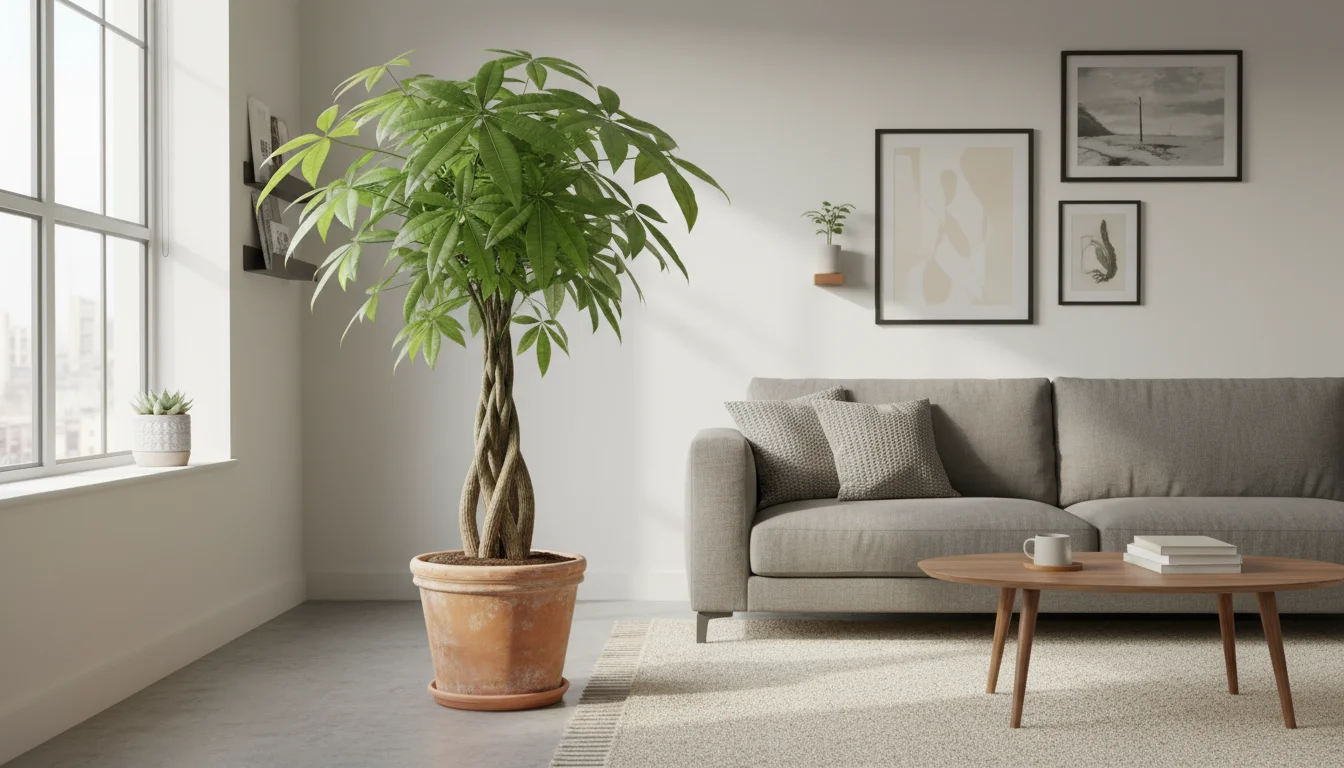
Money Tree (Pachira aquatica)
Recognized by its distinctive braided trunk and lush, palmate leaves, the Money Tree is often associated with good fortune and prosperity. It makes a striking visual statement and can grow into a substantial, yet manageable, indoor tree. Its sculptural form is perfect for adding height and presence to a room, fitting well into various design aesthetics from modern to traditional.
- Light: Thrives in bright indirect light. Direct sun can burn its leaves. It tolerates medium light, but growth may slow. Rotate the plant periodically to ensure even growth.
- Watering: Water thoroughly when the top 2-3 inches of soil have dried out. Ensure excellent drainage. Overwatering is a common problem and can lead to root rot.
- Humidity: Appreciates moderate to high humidity. Regular misting or placement near a humidifier can be beneficial.
- Why it’s pet-friendly: The Money Tree is listed as non-toxic to pets, making it a safe choice for a larger statement plant in your home.
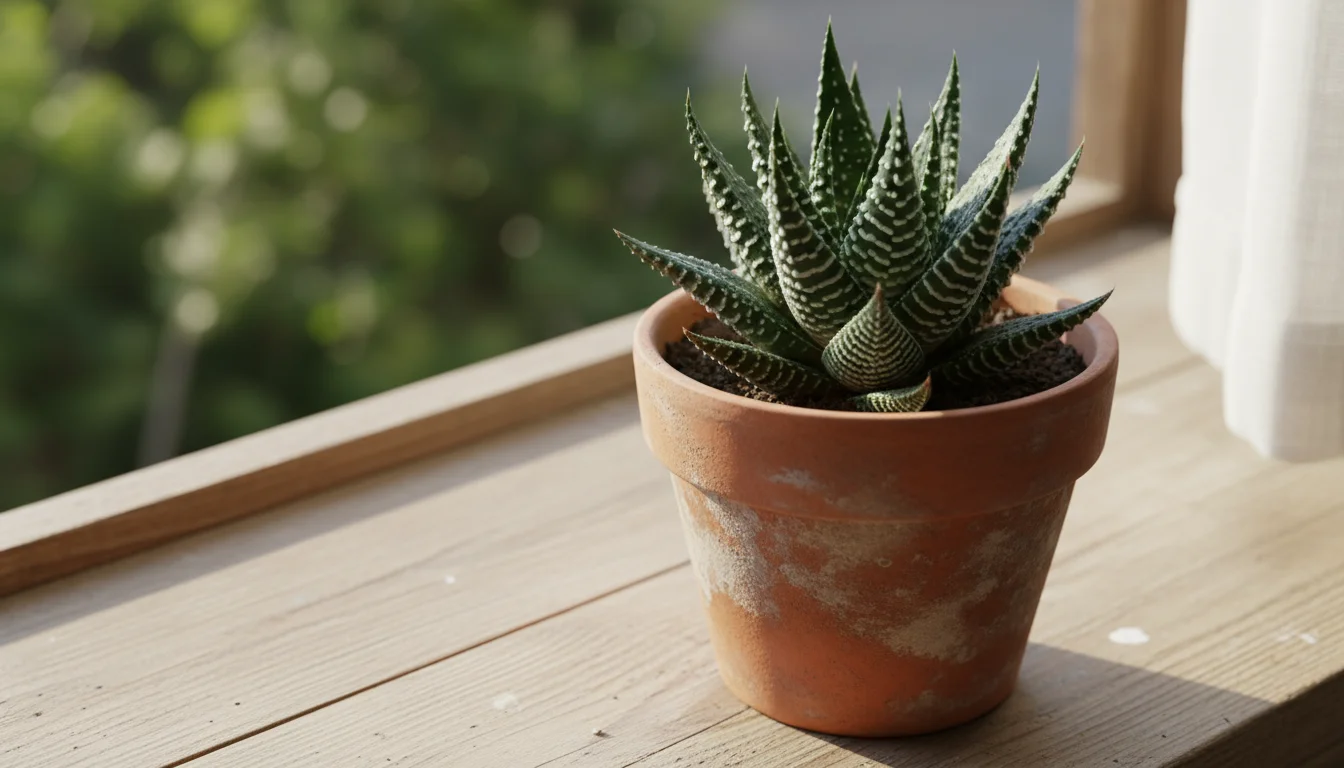
Haworthia (Haworthia fasciata)
Haworthia, often mistaken for Aloe, is a small, striking succulent known for its architectural, rosette-forming leaves. These plants feature distinctive white bands or tubercles that give them a zebra-like appearance. Their compact size makes them ideal for windowsills, terrariums, or small desks, adding unique texture without taking up much space. They are incredibly forgiving and perfect for beginners.
- Light: Prefers bright indirect light. Direct morning sun is usually fine, but avoid harsh afternoon sun which can cause leaf discoloration or scorching. They tolerate lower light, but their growth may become leggy.
- Watering: As a succulent, Haworthia stores water in its leaves. Water thoroughly, then allow the soil to dry out completely between waterings, usually every 2-4 weeks depending on conditions. Reduce watering significantly in winter.
- Soil: Requires well-draining cactus or succulent potting mix to prevent root rot.
- Why it’s pet-friendly: Haworthia is a safe and appealing succulent for homes with pets, providing unique visual interest without toxicity concerns.
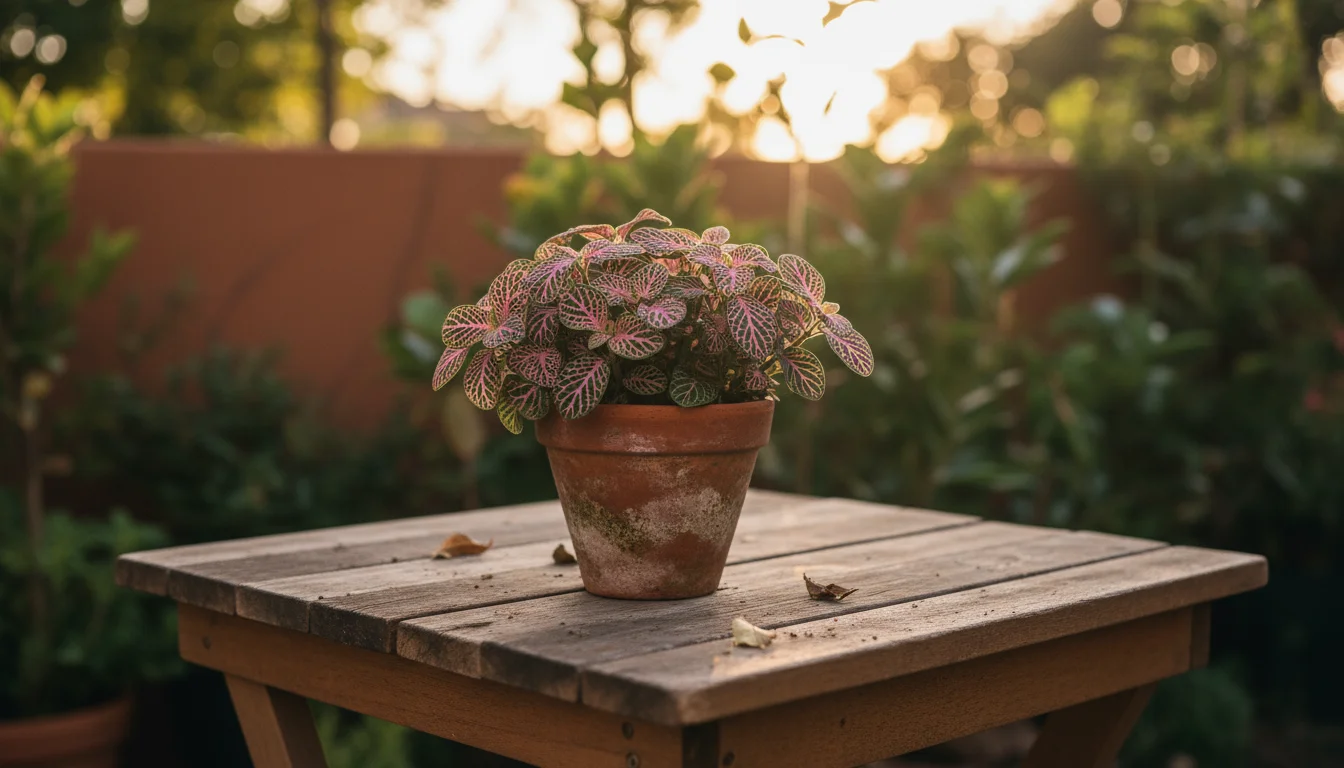
Fittonia (Nerve Plant) (Fittonia albivenis)
The Nerve Plant, or Fittonia, is adored for its intricate, contrasting vein patterns that resemble a delicate nervous system. Available in white, pink, or red veins against a green leaf background, it adds a vibrant pop of color and texture. Its low-growing, spreading habit makes it excellent for terrariums, humidity trays, or as a charming desktop plant in a small pot.
- Light: Thrives in medium to low indirect light. Direct sun quickly scorches its delicate leaves. Too little light, however, can cause its vibrant colors to fade.
- Watering: Keep the soil consistently moist but never soggy. Fittonia is dramatic; it will visibly wilt when thirsty, but usually perks right back up after watering. It does not tolerate drying out completely.
- Humidity: High humidity is essential for Fittonia. Mist daily, group with other plants, or use a pebble tray. It also excels in closed terrariums where humidity levels are naturally higher.
- Why it’s pet-friendly: Fittonia is considered non-toxic to pets, allowing you to enjoy its striking foliage without concern.
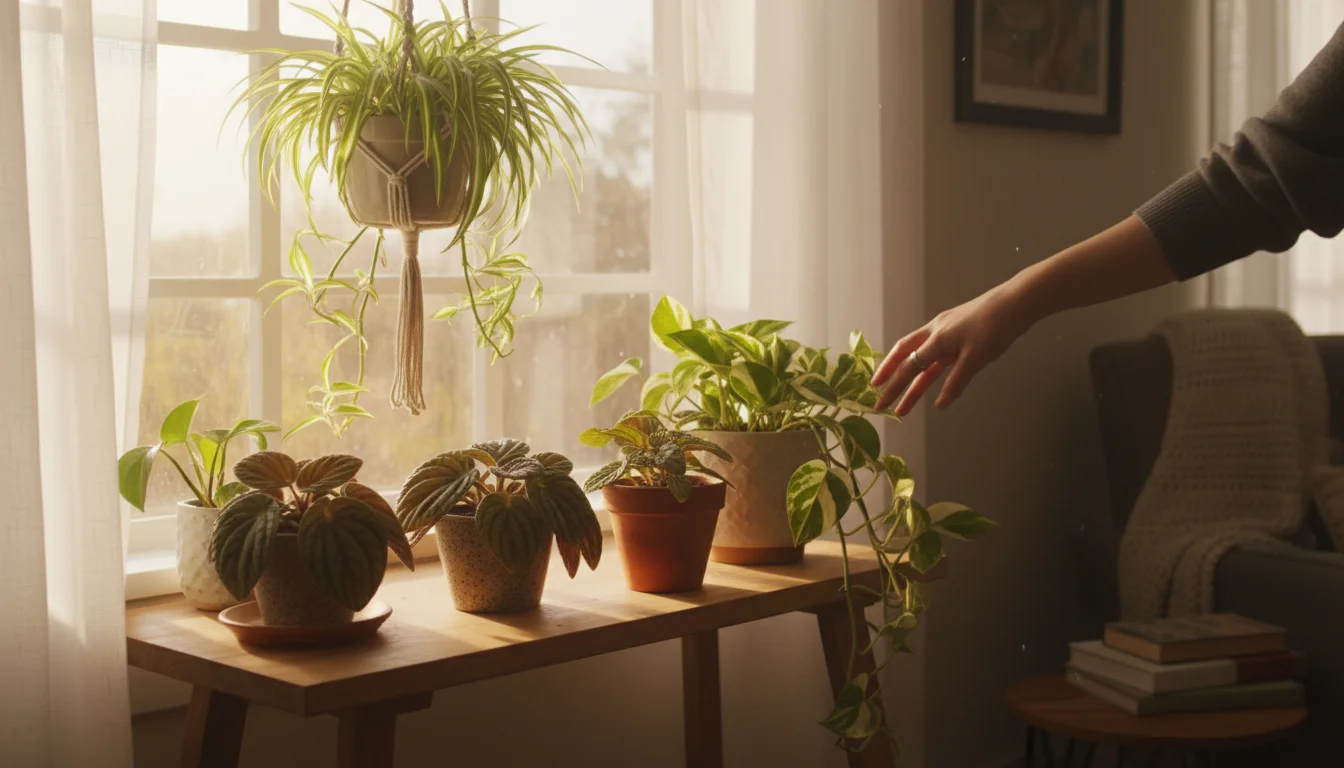
Nourishing Your Green Friends: Light Made Simple
Understanding light requirements is fundamental to successful houseplant care, even for pet safe houseplants. You do not need a degree in horticulture to master this; a few simple observations and adjustments make all the difference. Light is the primary energy source for photosynthesis, directly impacting your plant’s growth, health, and vibrancy. Providing the correct amount of light ensures your plants thrive, preventing common issues like leggy growth, pale leaves, or scorched foliage.
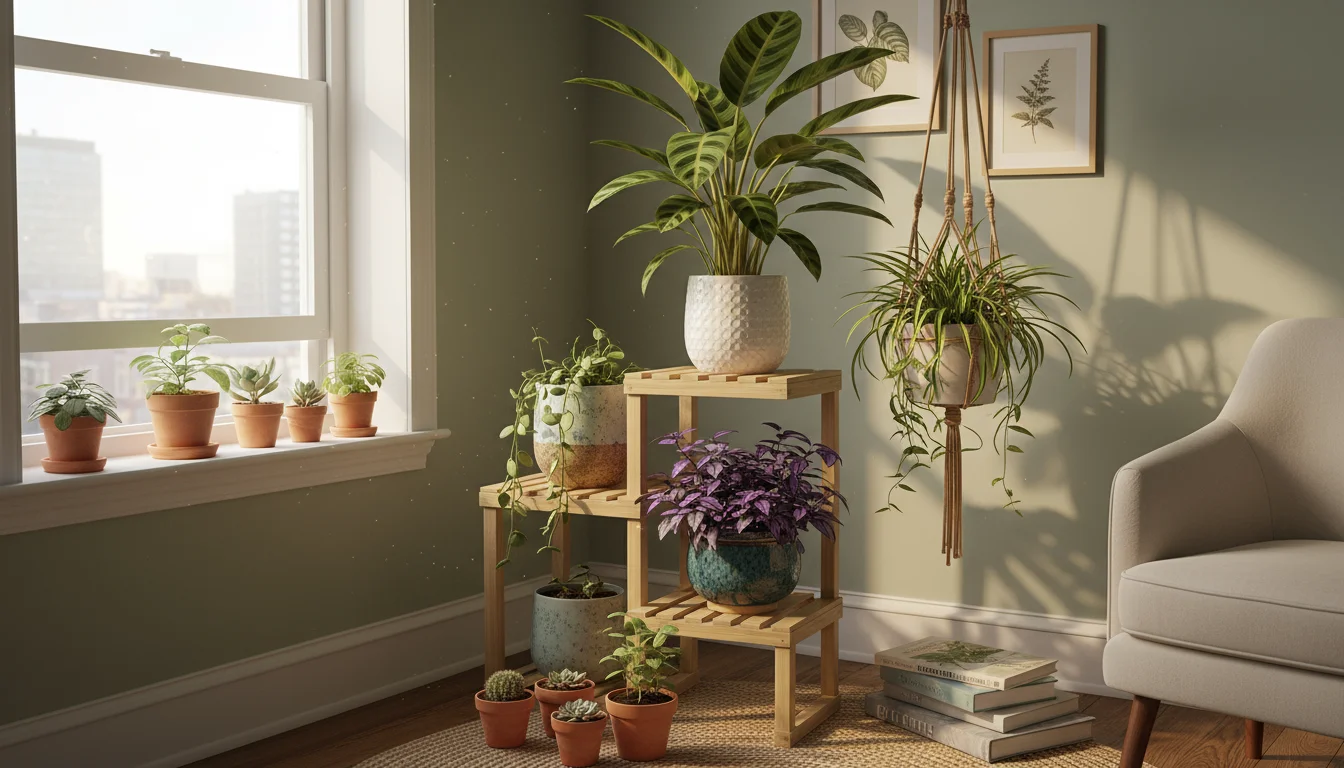
Decoding Light Levels for Your Compact Space
- Bright Indirect Light: This is the sweet spot for most pet friendly indoor plants. Think of a location near a south or west-facing window, but far enough away that direct sunbeams do not hit the leaves, or diffused by a sheer curtain. An east-facing window often provides perfect bright indirect light during the morning. Your plant receives plenty of luminosity, but no harsh, burning rays.
- Medium Light: A few feet away from a bright window, or in a room with good general ambient light. Plants here do not get direct sun, nor are they in deep shadow. They receive enough light to sustain themselves, though growth might be slower than in bright indirect light.
- Low Light: This refers to an area several feet from a window, or a room with only north-facing windows. While some plants tolerate low light, no plant truly thrives in darkness. Low light often means your plants need less frequent watering, as they use water more slowly. You might notice slower growth, smaller leaves, or less vibrant coloration in these conditions.
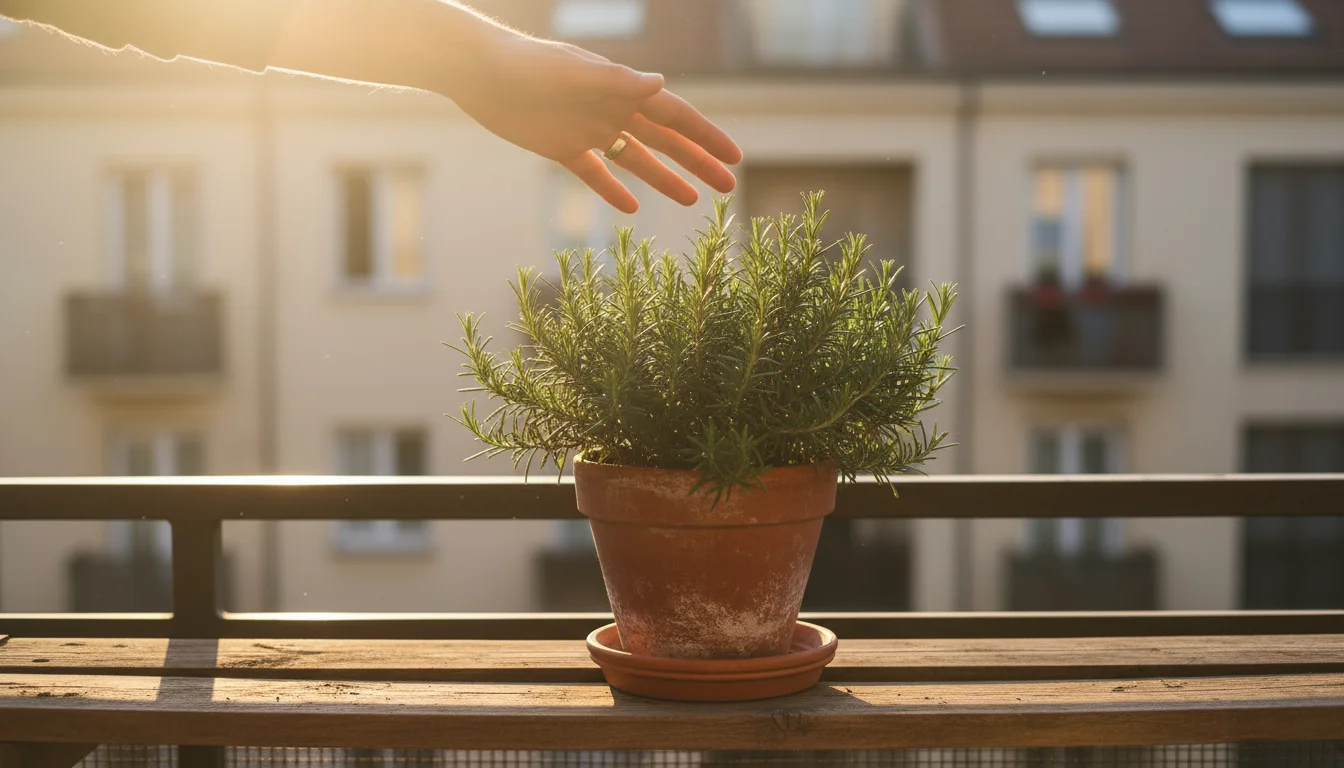
Practical Tips for Assessing Light
To determine the light level in your specific spot, use the “shadow test.” Hold your hand about a foot above the plant’s intended location:
- If you see a sharp, well-defined shadow, you have bright light (likely direct sun).
- If the shadow is soft and fuzzy, it is bright indirect light.
- If the shadow is barely visible, it is medium light.
- If you see no shadow, it is low light.
Remember that light intensity changes with the seasons. In winter, light levels decrease, so you might need to move plants closer to a window. In summer, intense afternoon sun might require pulling plants back or adding a sheer curtain for protection. You adapt your plant’s environment to ensure consistent, appropriate light year-round.
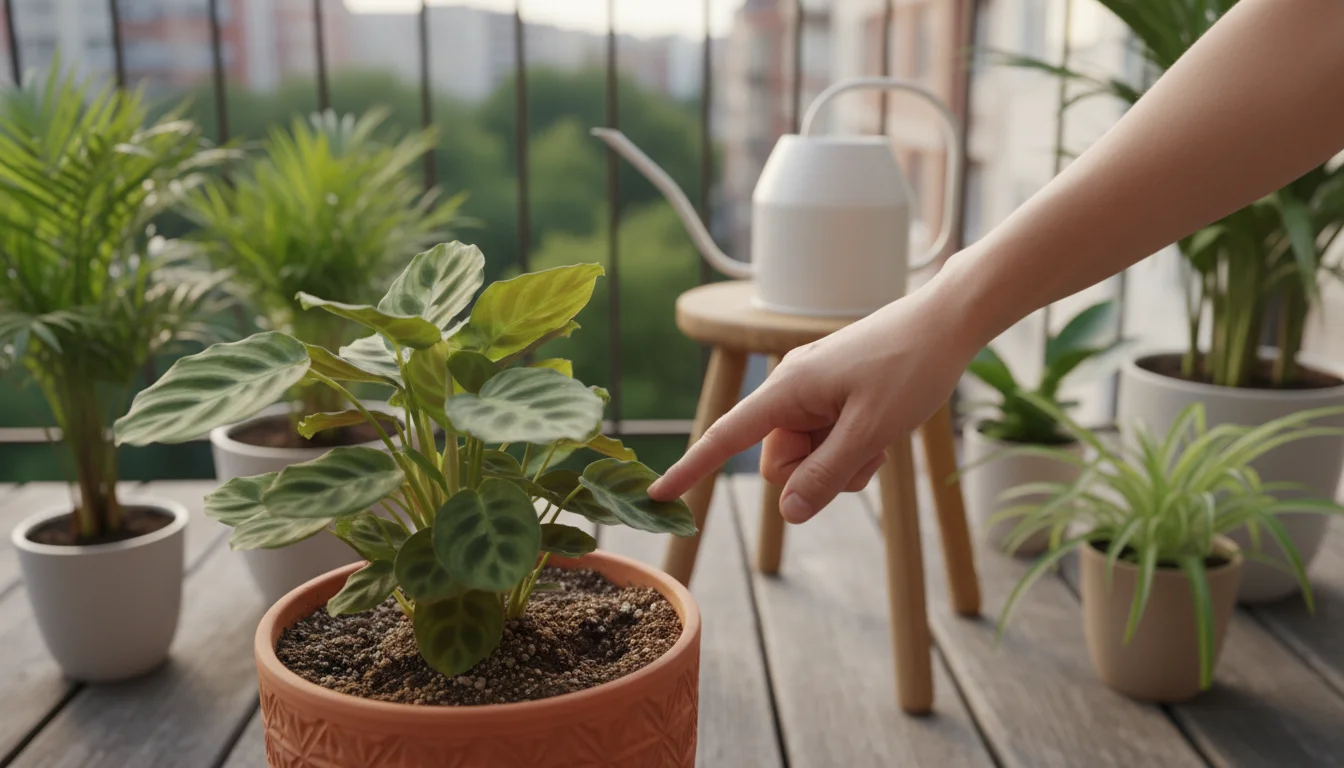
The Art of Hydration: Watering Without Guesswork
Watering correctly is perhaps the most critical aspect of houseplant care, and also the most common source of problems for pet safe houseplants. Overwatering leads to root rot, a silent killer, while underwatering causes wilting and stress. You aim for a balance, providing enough moisture for your plant’s needs without suffocating its roots. Understanding your plant’s specific needs, alongside some general best practices, ensures healthy hydration.
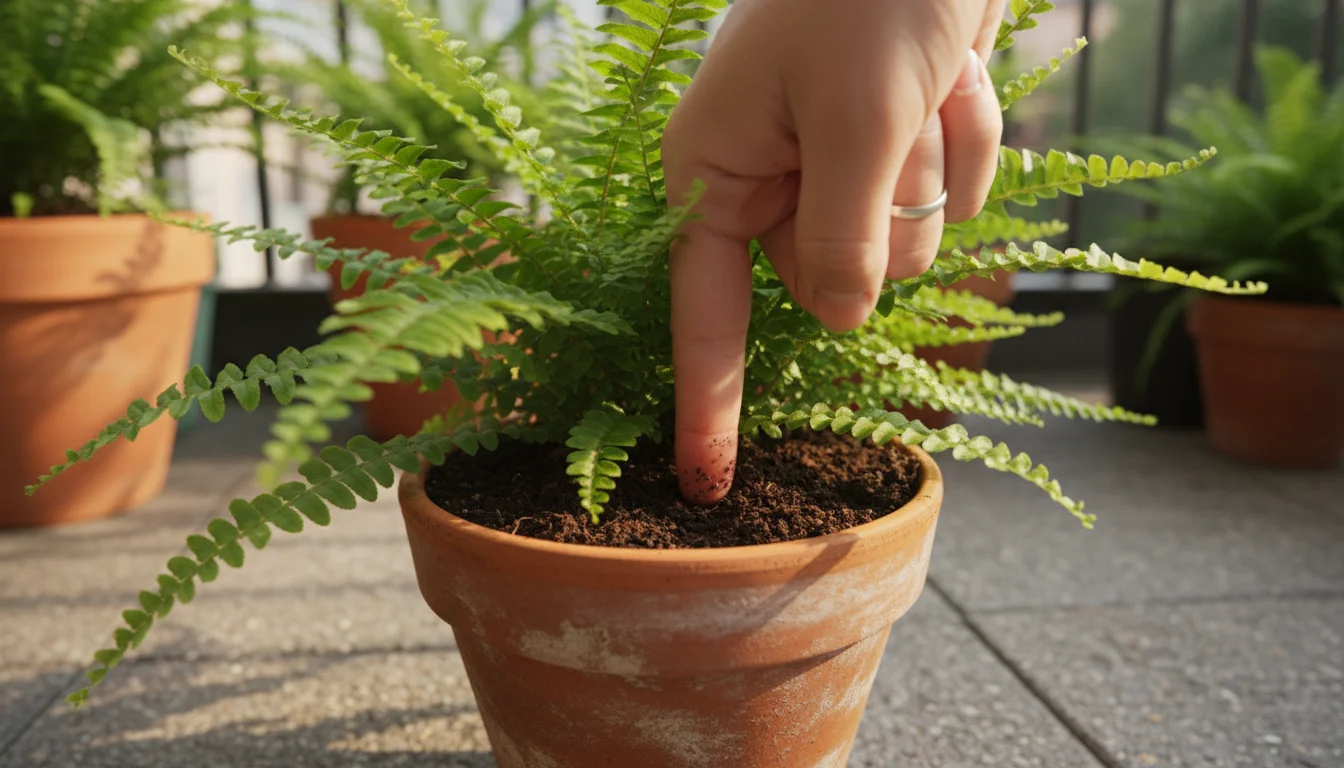
Your Go-To Watering Method: The Finger Test
Forget rigid schedules. Your plant’s watering needs vary based on light, temperature, humidity, and pot size. The most reliable method for assessing soil moisture is the “finger test.”
- Insert Your Finger: Stick your finger about 1-2 inches deep into the soil. For larger pots, go a bit deeper, perhaps 3-4 inches.
- Feel the Moisture:
- If the soil feels damp, do not water yet. Check again in a day or two.
- If the soil feels dry, it is time to water.
This simple test prevents overwatering, which starves roots of oxygen, and ensures you only water when your plant truly needs it. Most pet friendly indoor plants prefer the top inch or two of soil to dry out between waterings. Succulents and cacti need the soil to dry out completely, while ferns and prayer plants prefer consistent moisture.
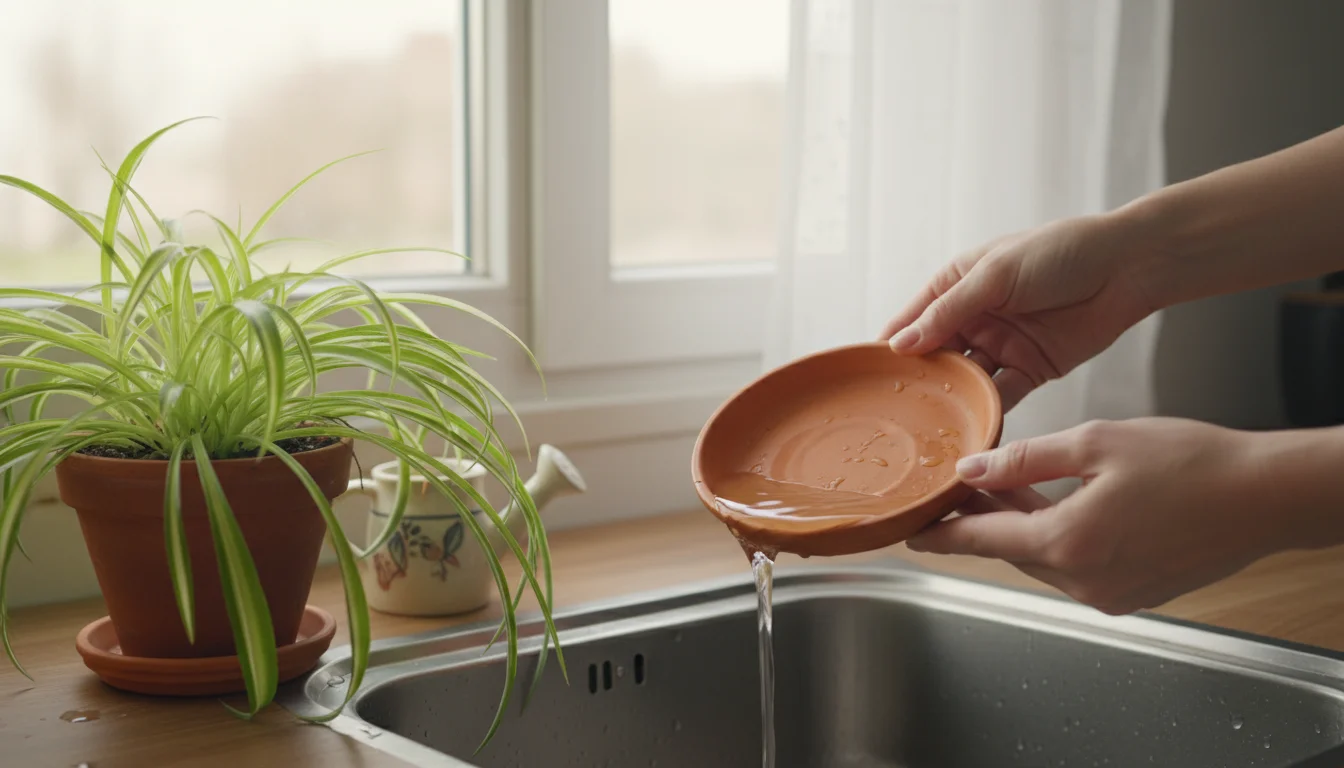
Watering Best Practices for a Thriving Home
- Water Thoroughly: When you do water, soak the soil until water drains from the bottom of the pot. This ensures all roots receive moisture. Discard any excess water collected in the saucer after about 15-30 minutes to prevent standing water and root rot.
- Use Room Temperature Water: Cold water can shock your plant’s roots. Allow tap water to sit out for a few hours to reach room temperature and allow chlorine to dissipate. Some plants are sensitive to chemicals in tap water; using filtered or rainwater can be beneficial.
- Consider Pot Type: Terracotta pots dry out faster than plastic or glazed ceramic pots due to their porous nature. Adjust your watering frequency accordingly.
- Bottom Watering: For some plants, especially those with delicate foliage or a preference for consistent moisture, bottom watering works wonders. Place the pot in a tray of water for 20-30 minutes, allowing the soil to wick up moisture from below. Remove and let drain completely.
- Monitor Seasonal Changes: Plants typically need less water in winter when growth slows and light levels decrease. They generally require more water in spring and summer during active growth.
By adopting the finger test and these practices, you provide optimal hydration, leading to happier, healthier pet safe houseplants.
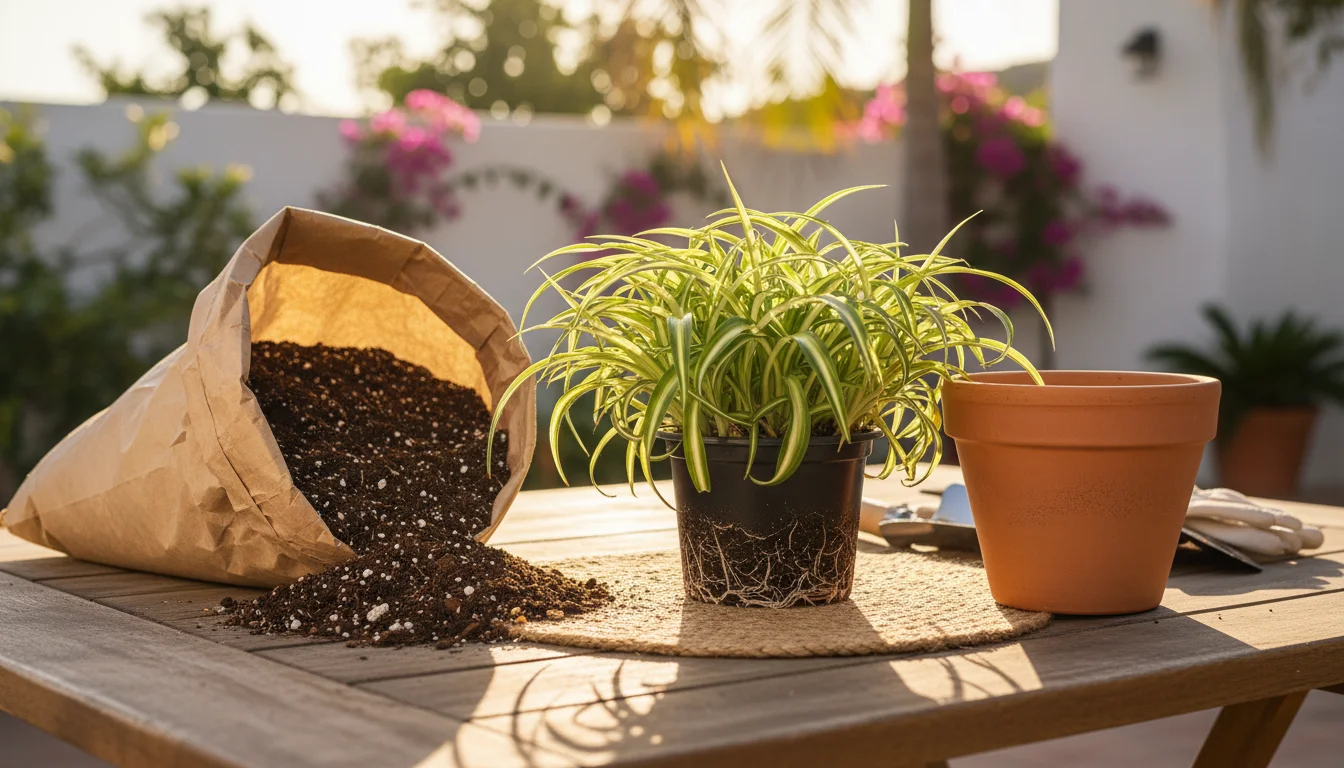
Foundation for Flourishing: Potting Mix and Repotting
The right potting mix provides essential support, nutrients, and drainage for your pet safe houseplants. Choosing a high-quality, appropriate mix prevents many common plant problems, particularly those related to overwatering. Repotting, though daunting to some, is a crucial step in your plant’s growth journey, ensuring it has adequate space and fresh nutrients.
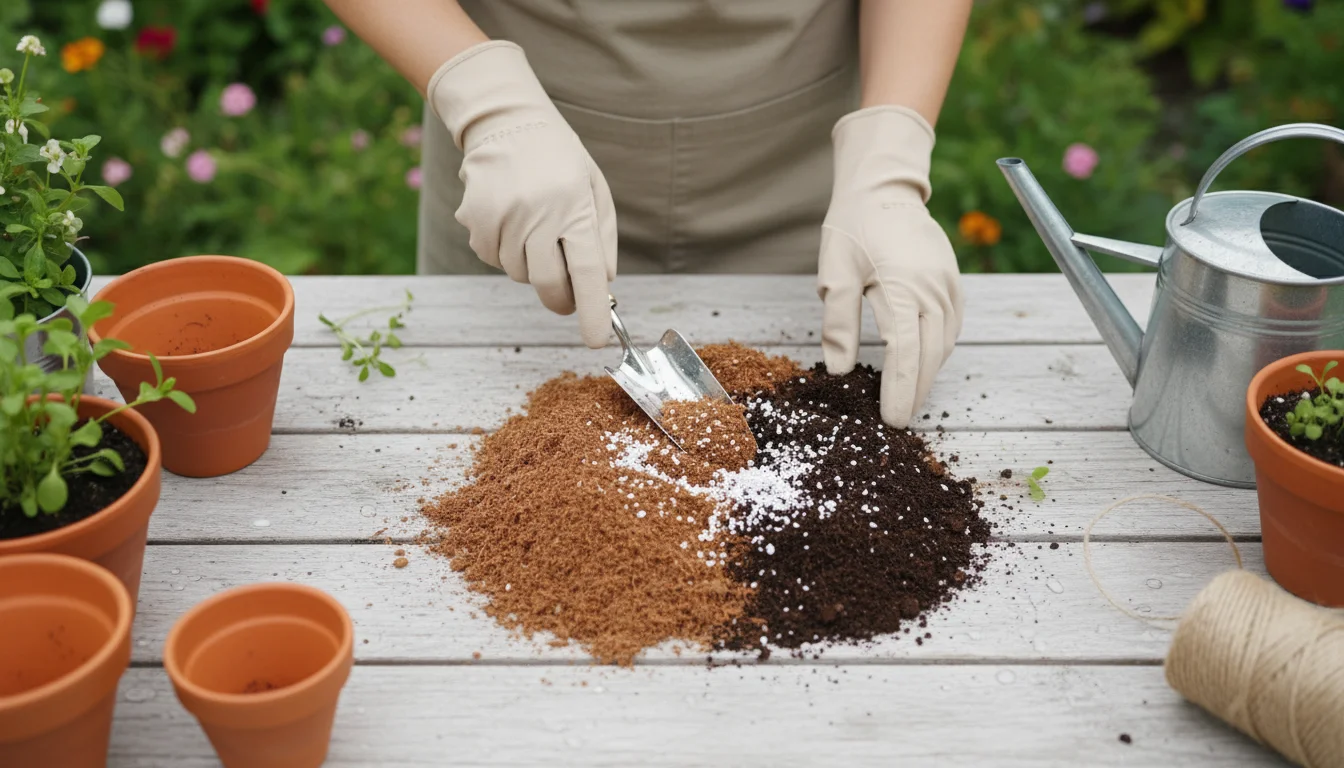
Selecting the Right Potting Mix
Most common houseplants thrive in a well-draining, airy potting mix. Avoid heavy garden soil, which compacts easily and retains too much moisture, leading to root rot. Here’s what you need to know:
- Peat-Free Mixes: You can choose sustainable peat-free potting mixes, which reduce environmental impact. These often use coco coir, compost, and wood fibers as their base. They perform just as well as peat-based mixes and align with environmentally conscious gardening practices.
- Good Drainage is Key: A good general-purpose indoor potting mix is a solid starting point. However, many pet friendly indoor plants benefit from amendments to improve drainage and aeration.
- Amendments to Consider:
- Perlite: White, lightweight, volcanic rock that improves drainage and aeration. It keeps soil from compacting too much.
- Pumice: Similar to perlite but heavier and less prone to floating. Also excellent for drainage.
- Orchid Bark: Provides large air pockets and helps with drainage, great for plants that like a chunkier mix, such as epiphytic cacti or some aroids.
- Coarse Sand: Use for succulents and cacti to enhance drainage. Ensure it is coarse horticultural sand, not fine play sand.
A good general mix for many pet safe houseplants is two parts high-quality potting mix, one part perlite, and one part orchid bark or coco coir. Adjust this ratio based on your specific plant’s needs; succulents prefer even more grit, while ferns appreciate slightly more moisture retention.
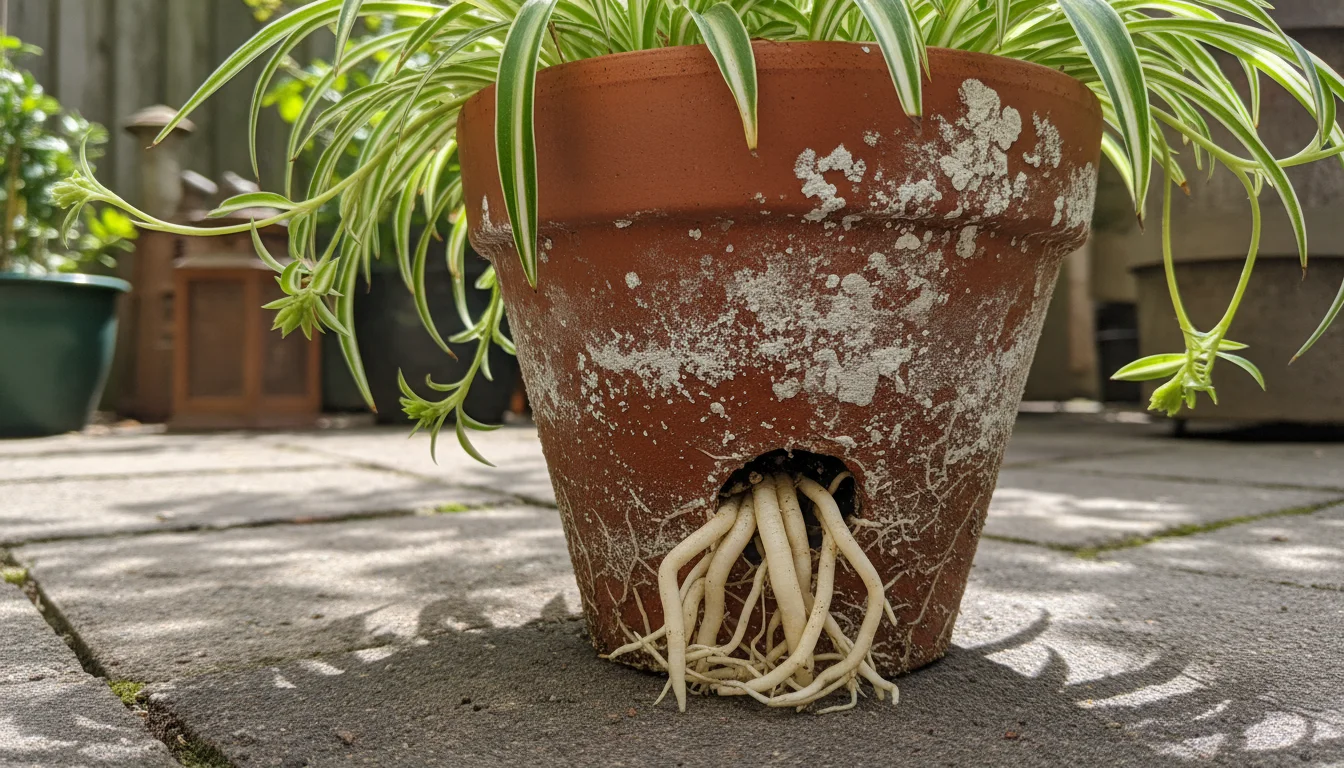
When and How to Repot
Repotting gives your plant fresh nutrients and more room to grow. You should repot when your plant exhibits these signs:
- Roots Emerging from Drainage Holes: This is a clear indicator that your plant is root-bound and needs more space.
- Stunted Growth: If your plant has stopped growing or appears unhealthy despite adequate light and water, it might be hungry for fresh soil.
- Water Drains Too Quickly or Not at All: If water runs straight through, the soil might be too compacted. If it sits on top, the soil is hydrophobic and needs replacement.
- Visible Salt or Mineral Buildup: A white crust on the soil surface or pot rim indicates mineral buildup from watering, which can harm roots.
Step-by-Step Repotting Guide:
- Choose the Right Size Pot: Select a new pot only one size larger (e.g., from a 4-inch to a 6-inch pot). Too large a pot holds excess moisture, increasing the risk of root rot. Ensure it has drainage holes.
- Gather Supplies: Potting mix, new pot, newspaper or tarp for mess, gardening gloves if desired.
- Remove the Plant: Gently tip the plant on its side, supporting the base, and carefully slide it out. If stubborn, you might need to tap the pot’s sides.
- Inspect Roots: Untangle any circling roots gently. Trim away any mushy, dark, or foul-smelling roots (signs of rot) with clean shears. Healthy roots are typically white or tan.
- Add New Soil: Place a layer of fresh potting mix at the bottom of the new pot. Center your plant, ensuring the top of the root ball is at the same level as it was in the old pot, about an inch below the rim.
- Fill and Settle: Fill around the root ball with more potting mix, gently tamping it down to remove large air pockets. Do not compact the soil too tightly.
- Water Thoroughly: Water your newly repotted plant until water drains from the bottom. This helps settle the soil around the roots.
You typically repot in spring or early summer when plants are actively growing, allowing them to recover quickly. Most houseplants need repotting every 1-2 years, but some slower growers might need less frequent attention.
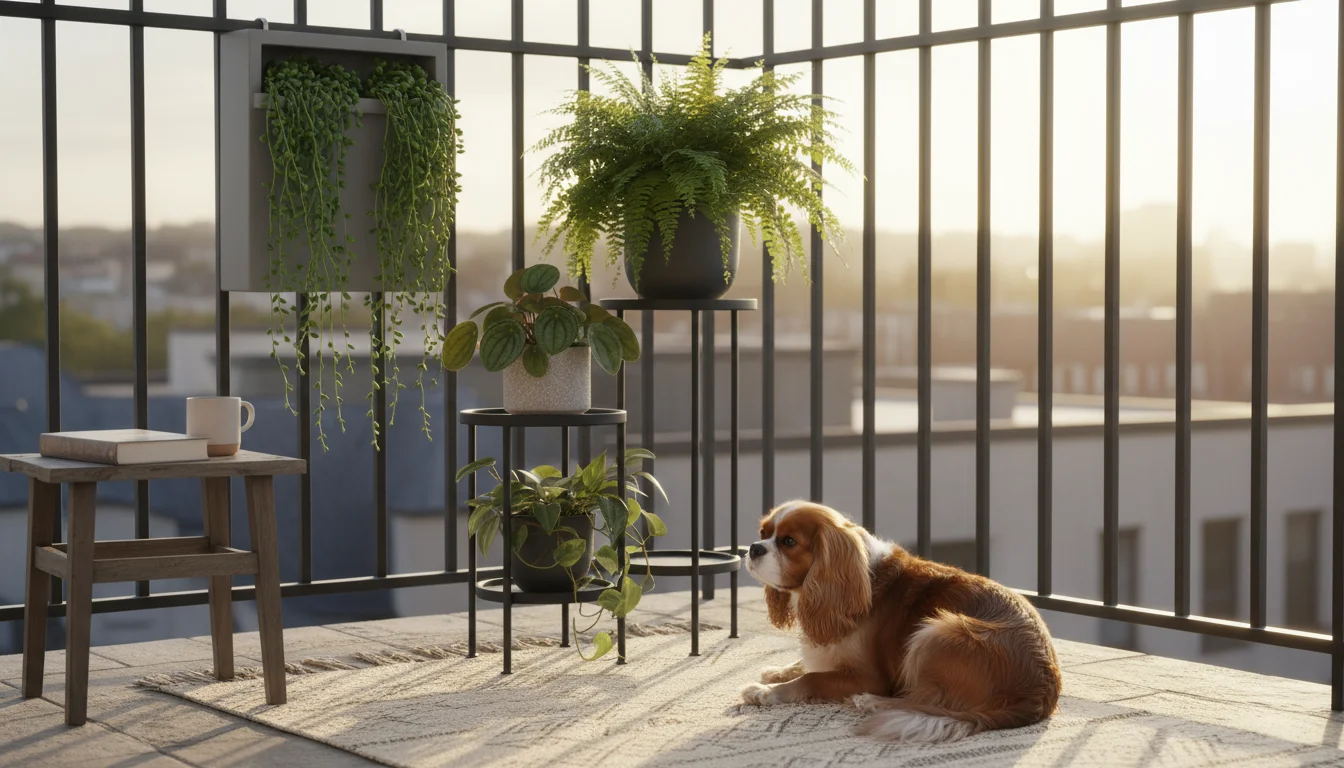
Smart Placement and Styling: Keeping Plants and Pets Happy
Integrating pet safe houseplants into your home is not just about choosing the right plant; it is also about smart placement and thoughtful styling. For those in compact homes, maximizing space while ensuring pet safety requires a creative approach. You can achieve beautiful displays that both enhance your decor and keep your furry friends out of harm’s way.
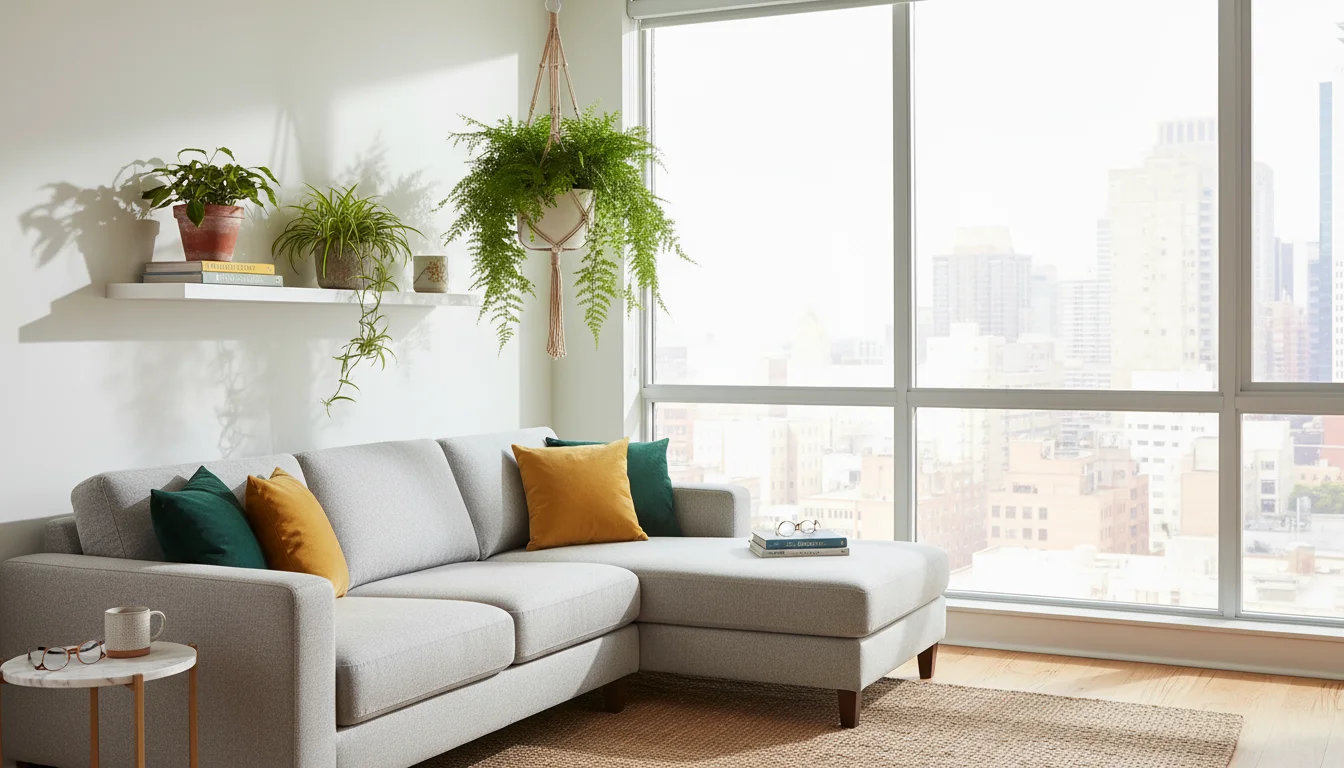
Elevate for Safety and Style
One of the simplest ways to protect your plants and pets is to elevate your greenery. This approach is particularly effective for cat safe plants, as cats are often skilled climbers. Dog friendly indoor plants benefit from being above ground level, especially if your dog is prone to sampling things off the floor.
- Hanging Planters: Suspend plants from ceilings, curtain rods, or wall-mounted hooks. This not only keeps plants out of reach but also adds a dynamic, space-saving element to your decor. Spider plants, Boston ferns, and Prayer plants are excellent candidates for hanging.
- High Shelves: Utilize wall-mounted shelves or tall bookshelves. Ensure shelves are securely fastened to prevent tipping. Place smaller, lighter pots on higher shelves.
- Plant Stands and Pedestals: Tall plant stands lift plants off the floor, making them less accessible to ground-level pets. Choose sturdy stands that are difficult to knock over.
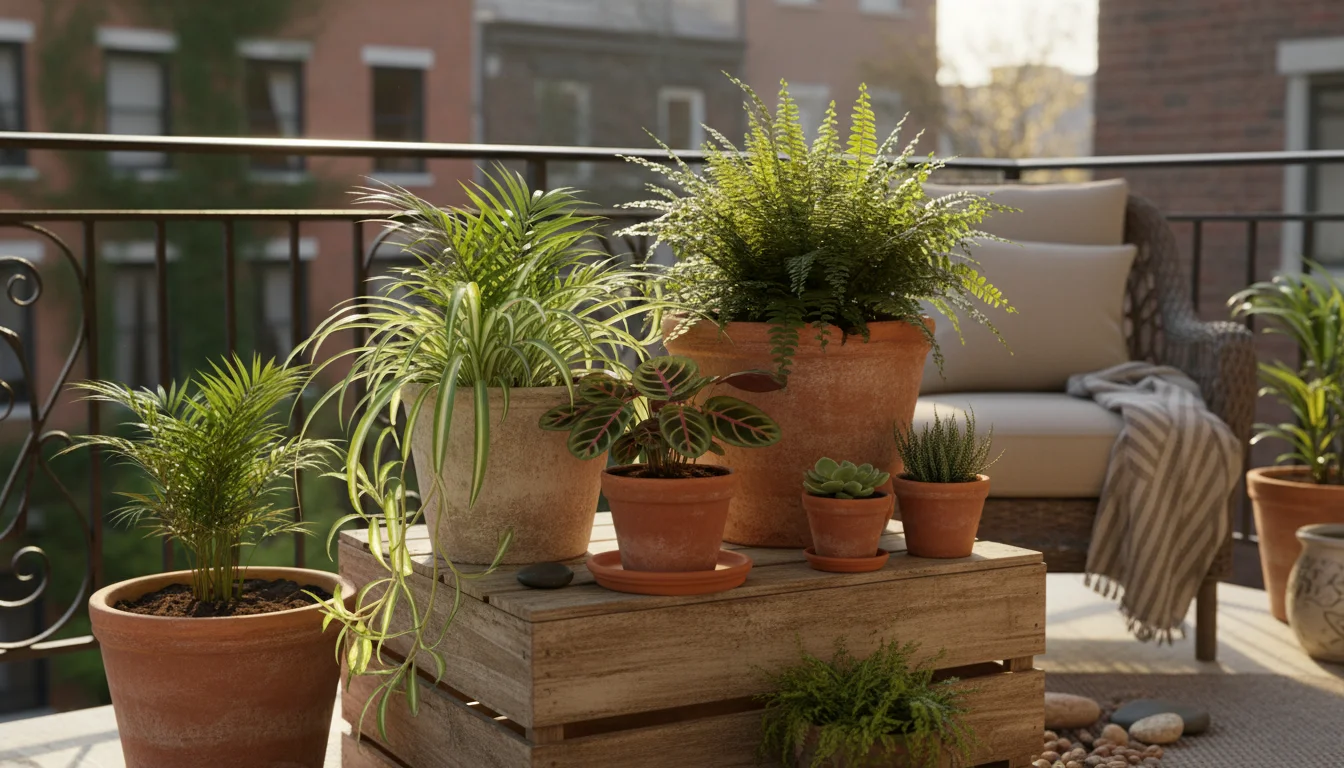
Strategic Groupings and Barriers
You can also create visual and physical barriers to deter overly curious pets:
- Grouping Plants: Arrange several non-toxic plants together. Sometimes, the sheer volume of foliage can make it less appealing for a pet to single out a specific leaf. Ensure the grouping does not create a hideaway for pets to get stuck in.
- Terrariums and Cloches: For very small, delicate plants or particularly persistent pets, a closed terrarium or glass cloche provides an attractive, protective enclosure. This also helps maintain humidity for humidity-loving pet safe houseplants like Fittonia.
- Designated Plant Zones: If you have a room or a specific area your pets rarely access, consider designating it as your “plant zone.” This provides a safe space for any plant, even if it is not explicitly pet-friendly, though this article focuses on safe plants for all areas.
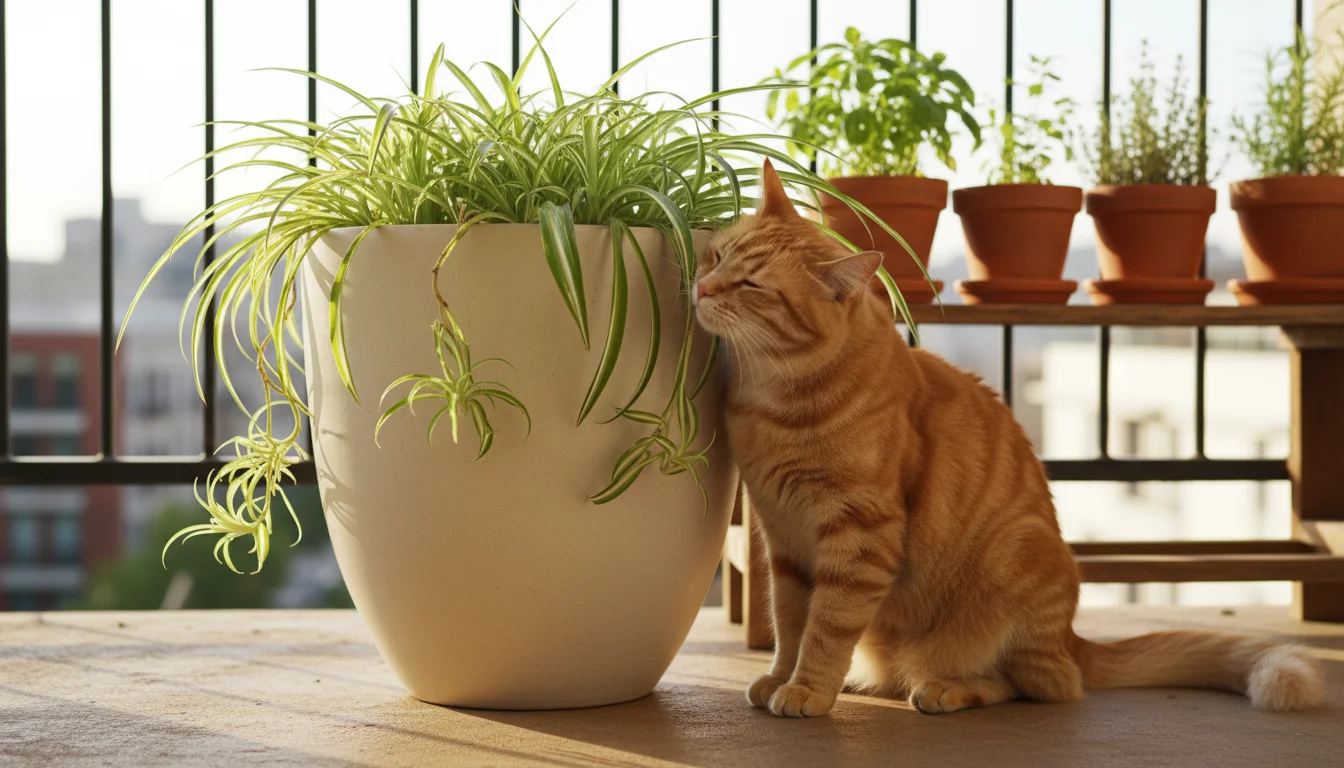
Consider Pot Stability and Material
Active pets can easily knock over lightweight pots. Choose heavier, sturdier pots, especially for floor plants or those on low stands. Ceramic or terracotta pots offer more stability than plastic. For hanging plants, ensure the hanger and pot are well-secured and can bear the weight of the plant, soil, and water. You prevent accidents and potential messes by prioritizing stability.
By thoughtfully considering placement and styling, you create a beautiful, plant-filled home that coexists harmoniously with your beloved pets. Your focus on pet safety does not mean sacrificing aesthetic appeal.
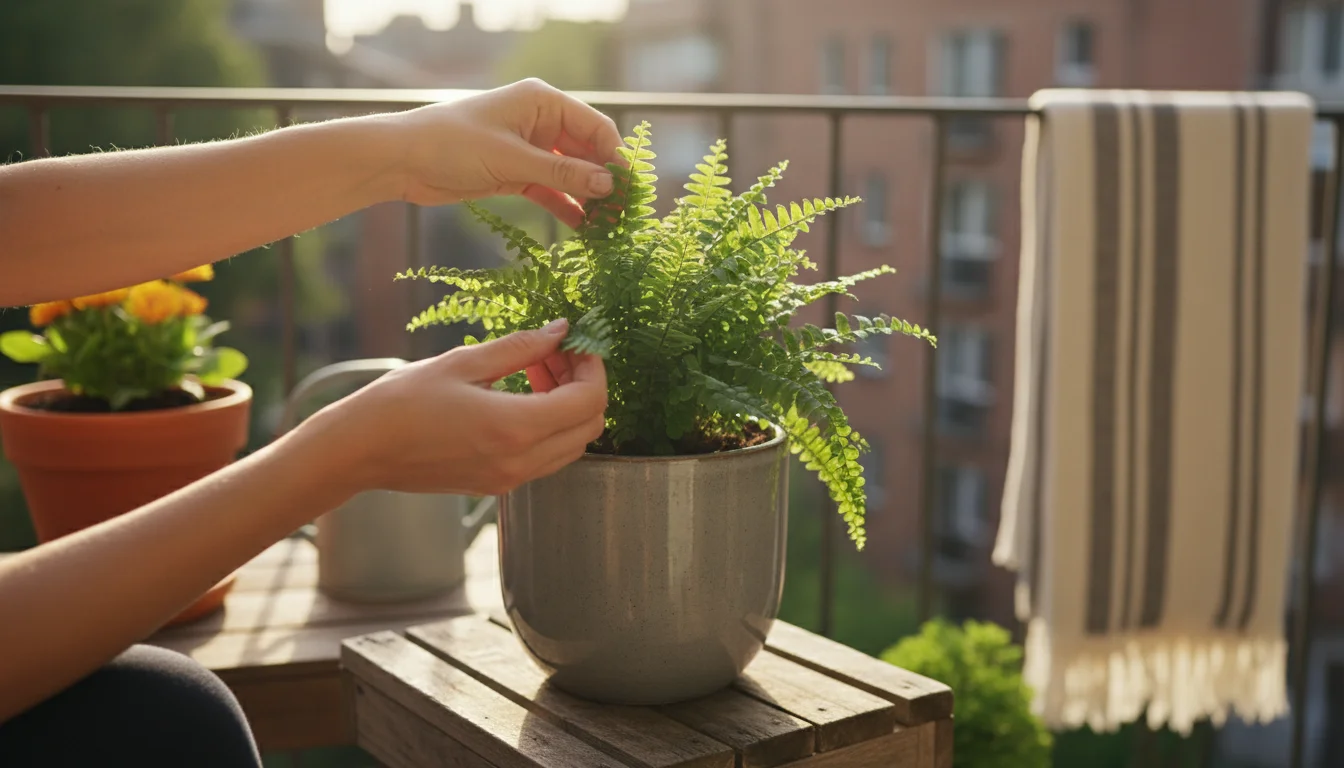
Common Challenges and Pet-Safe Solutions
Even the most diligent plant parent encounters challenges. Yellowing leaves, wilting, or unwelcome pests can be frustrating. The good news is that most issues have straightforward solutions. When you have pets, however, ensuring these solutions are non-toxic to your animal companions becomes paramount. This section guides you through common problems with pet safe houseplants and offers practical, pet friendly indoor plant care strategies.
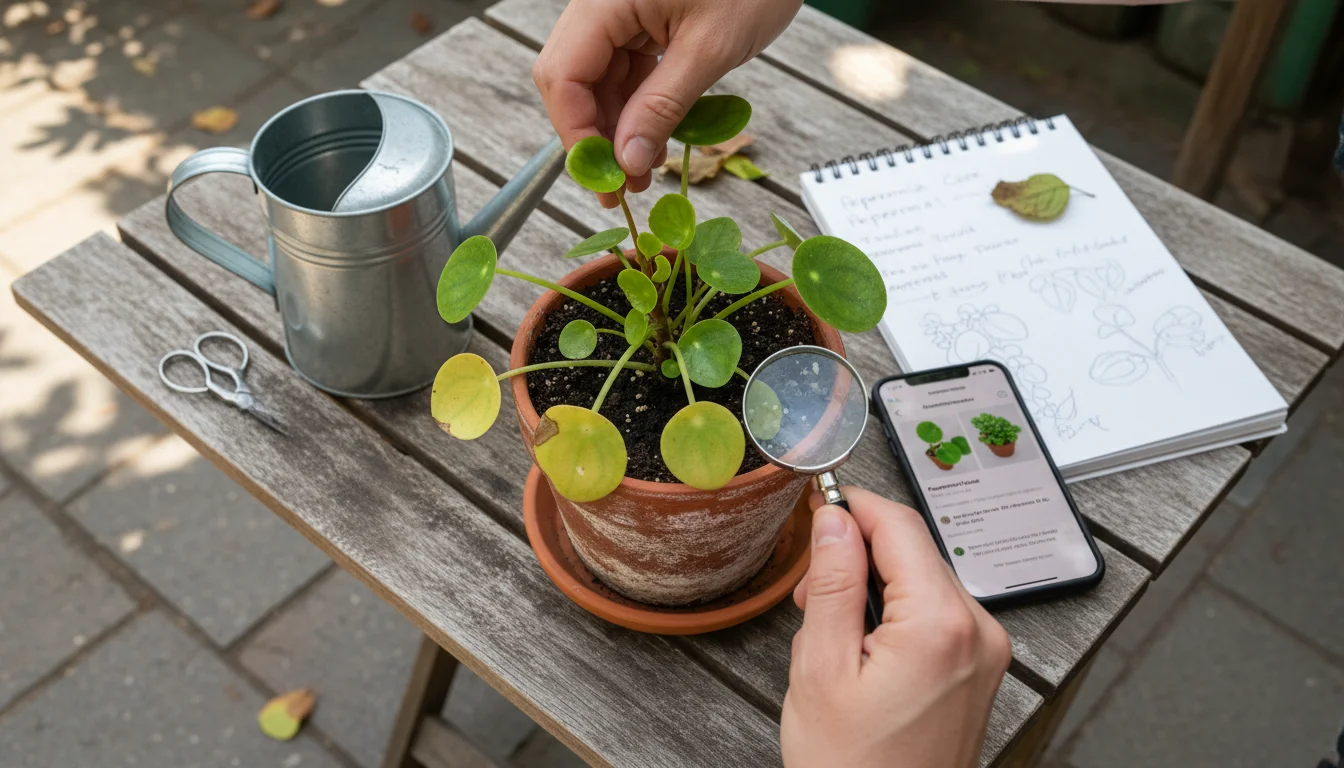
Decoding Plant Symptoms
Your plants communicate their needs through their appearance. Learning to interpret these signs helps you act quickly.
- Yellow Leaves: Often a sign of overwatering. Root rot, caused by consistently wet soil, prevents roots from absorbing nutrients effectively, leading to yellowing. It can also signify underwatering if the lower leaves turn yellow and then drop off. Check soil moisture before watering.
- Wilting or Drooping Leaves: Most commonly points to underwatering. Your plant is thirsty. Water thoroughly until it drains from the pot. It can also indicate overwatering (root rot prevents water uptake) or sometimes too much direct sun.
- Brown, Crispy Leaf Tips: Typically caused by low humidity, underwatering, or mineral buildup in the soil or water. Increase humidity, water more consistently, or consider using filtered water.
- Leggy Growth: Stretched-out stems with sparse leaves indicate insufficient light. Move your plant to a brighter spot.
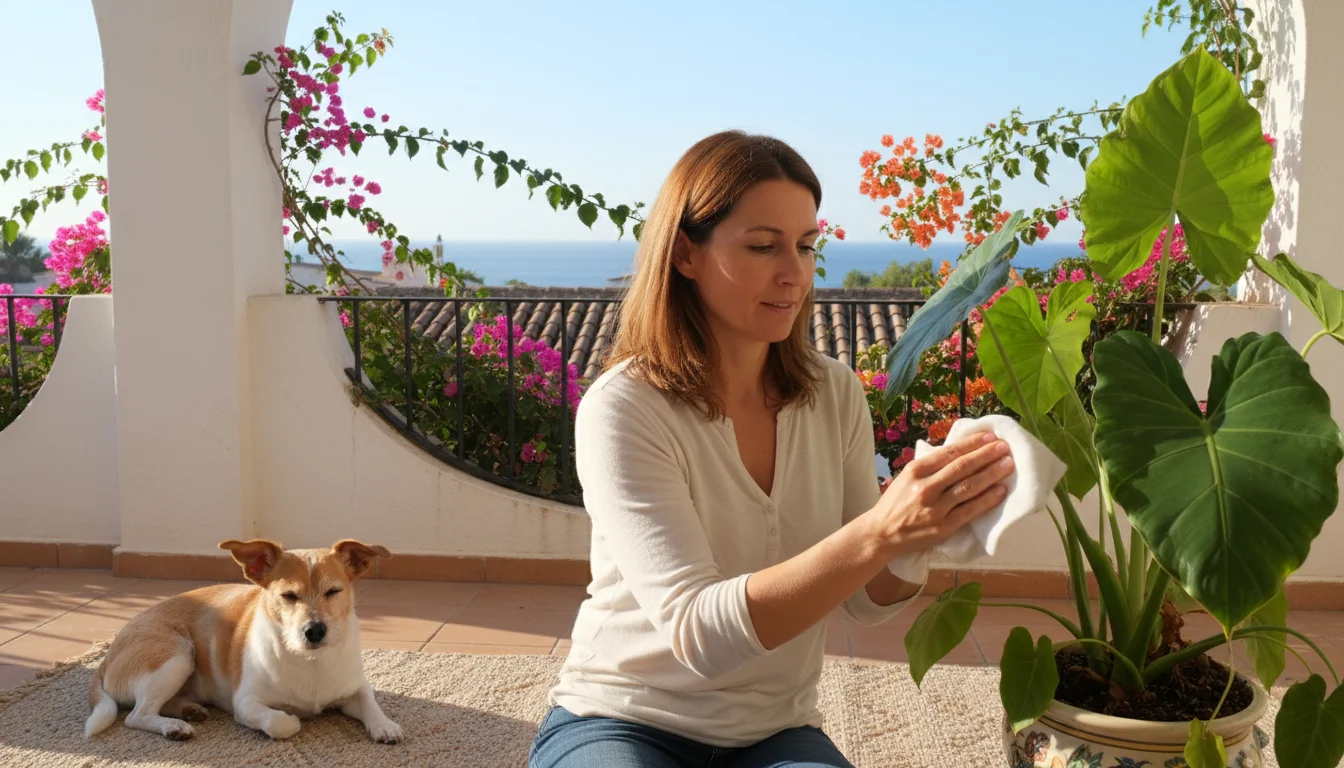
Pet-Safe Pest Management
Pests are an inevitable part of gardening, even indoors. The key is early detection and using solutions that are safe for your pets. Avoid harsh chemical pesticides entirely. Integrated Pest Management (IPM) focuses on prevention and eco-friendly treatments.
Prevention First:
- Inspect New Plants: Always thoroughly check any new plant for pests before bringing it into your home. Isolate new plants for a few weeks to monitor for outbreaks.
- Good Airflow: Ensure adequate air circulation around your plants. Stagnant air encourages fungal issues and some pests.
- Quarantine Sick Plants: If you spot pests, immediately move the affected plant away from your other plants.
- Cleanliness: Regularly wipe down leaves with a damp cloth. This removes dust and can dislodge tiny pests before they become an infestation.
Pet-Safe Treatment Options:
If you discover pests, reach for these non-toxic remedies:
- Neem Oil Spray: Neem oil is a natural, botanical insecticide and fungicide. Mix pure cold-pressed neem oil with a few drops of mild, unscented liquid soap (as an emulsifier) and water according to package directions. Spray affected plants thoroughly, ensuring you cover the undersides of leaves. Neem oil is generally considered safe for pets once dry, but prevent pets from ingesting it while wet. Reapply every 5-7 days until pests are gone.
- Insecticidal Soap: A non-toxic solution that smothers soft-bodied pests like aphids, spider mites, and mealybugs. You can purchase pre-made insecticidal soap or make your own with a few drops of mild dish soap (ensure it is free of harsh chemicals or degreasers) diluted in water. Spray affected areas generously. This is safe for pets once it dries.
- Manual Removal: For larger pests like mealybugs or scale, use a cotton swab dipped in rubbing alcohol to gently wipe them off. For fungus gnats, reduce watering, allow the topsoil to dry completely, and use yellow sticky traps to catch adults. You can also sprinkle a layer of horticultural sand or fine gravel on the soil surface to deter them.
You can effectively manage common plant problems and pest issues by understanding plant signals and employing pet-safe remedies. Your commitment to pet friendly indoor plants extends to how you care for them, creating a truly safe and thriving environment.
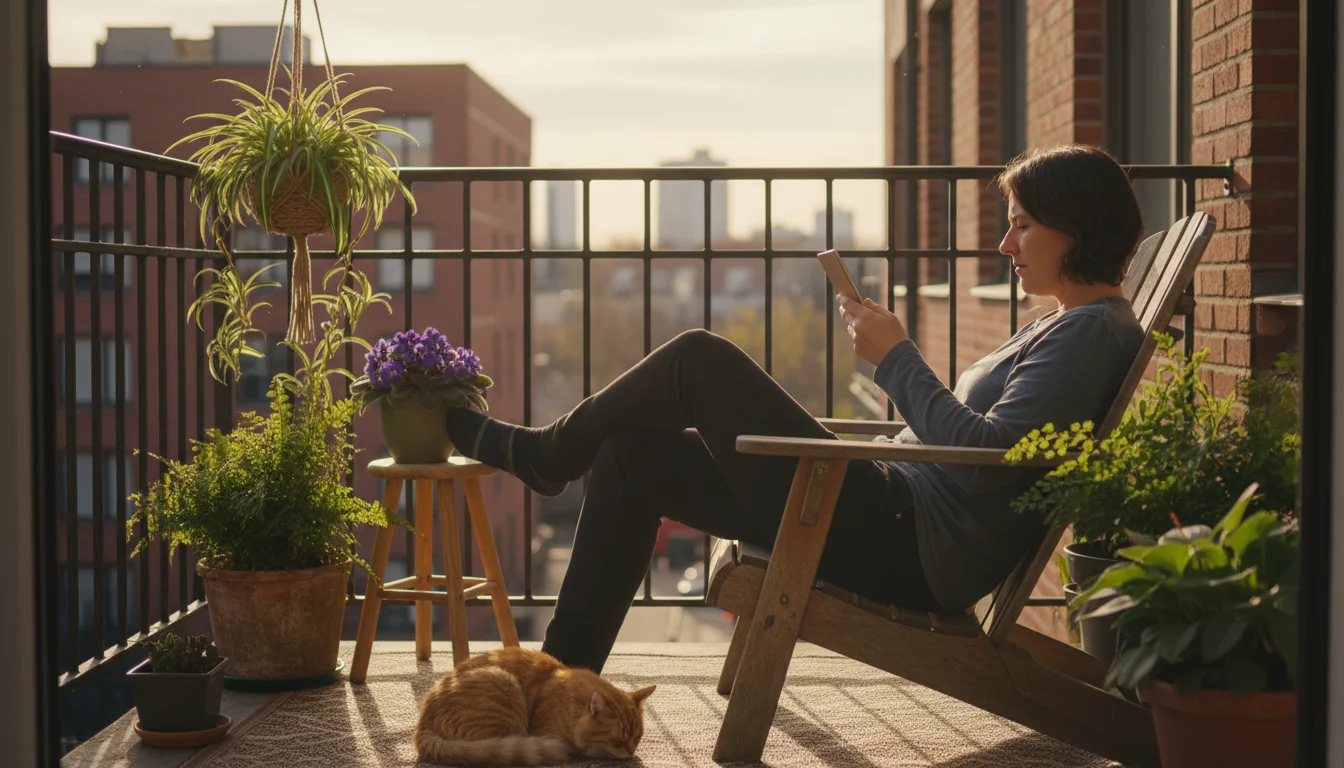
Frequently Asked Questions
Are all ferns pet-friendly?
No, not all ferns are pet-friendly. While many common indoor ferns like the Boston Fern (Nephrolepis exaltata), Maidenhair Fern (Adiantum spp.), and Staghorn Fern (Platycerium spp.) are generally considered non-toxic to cats and dogs, others are toxic. For example, the Asparagus Fern (Asparagus setaceus) is toxic to pets, causing gastrointestinal upset and dermatitis. Always verify a specific fern species with the ASPCA database before bringing it home.
Can I put cat grass with my other pet-safe houseplants?
Yes, you absolutely can. Cat grass (typically barley, oat, wheat, or rye grass) is grown specifically for cats to munch on and is completely safe. Placing it alongside your other cat safe plants offers your feline friend a designated, attractive, and healthy alternative to nibbling on other foliage. This often redirects their chewing behavior to an appropriate outlet.
What should I do if my pet eats a piece of a non-toxic plant?
If your pet ingests a non-toxic plant, observe them closely. Minor gastrointestinal upset like mild vomiting or diarrhea can occur, but serious issues are unlikely. If symptoms are severe, persistent, or cause you concern, contact your veterinarian. In most cases, a non-toxic plant ingestion requires no more than monitoring your pet for a day or two.
How can I make sure my indoor plants are truly pet-friendly?
To ensure your indoor plants are truly pet-friendly, always identify plants by their botanical (scientific) names, then cross-reference these names with a reputable resource like the ASPCA’s non-toxic plant list before purchasing. You can also opt for only plants explicitly labeled as pet-safe by reputable nurseries. Consistent verification is your best defense.
